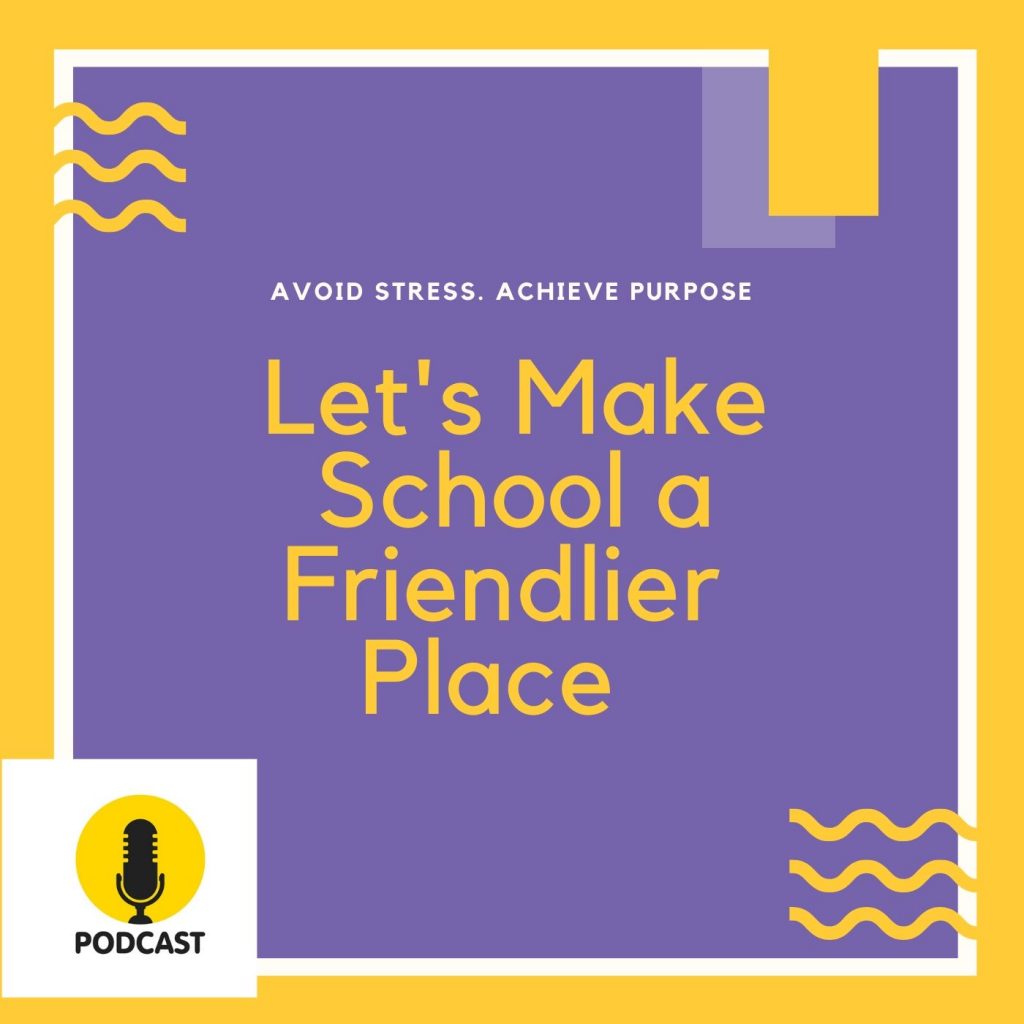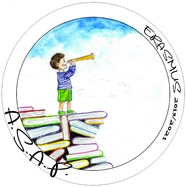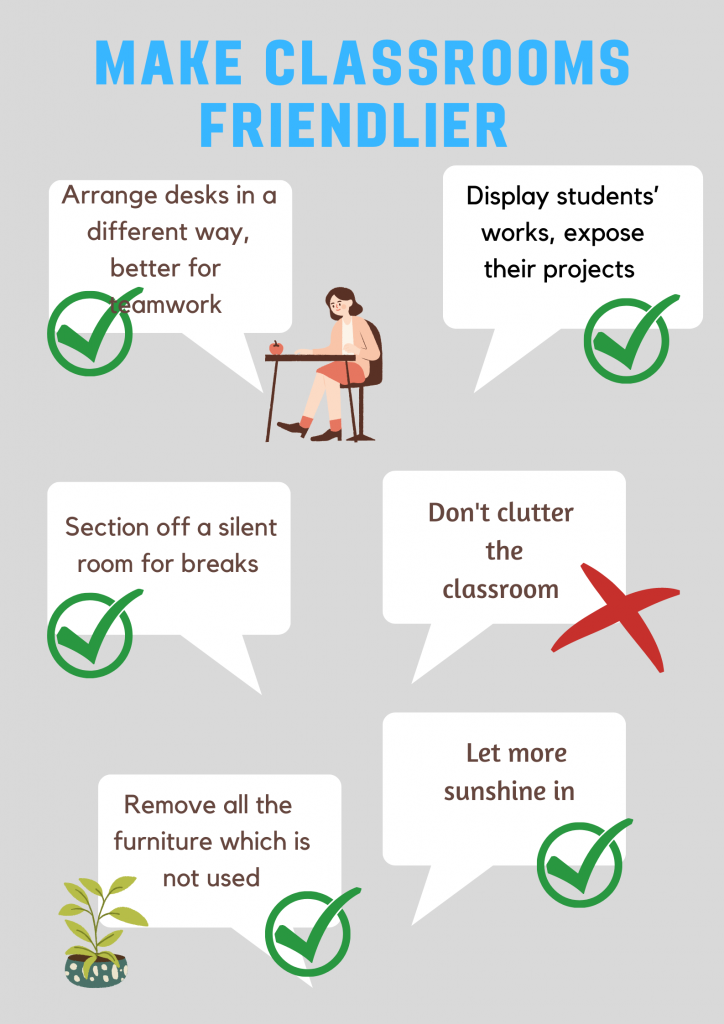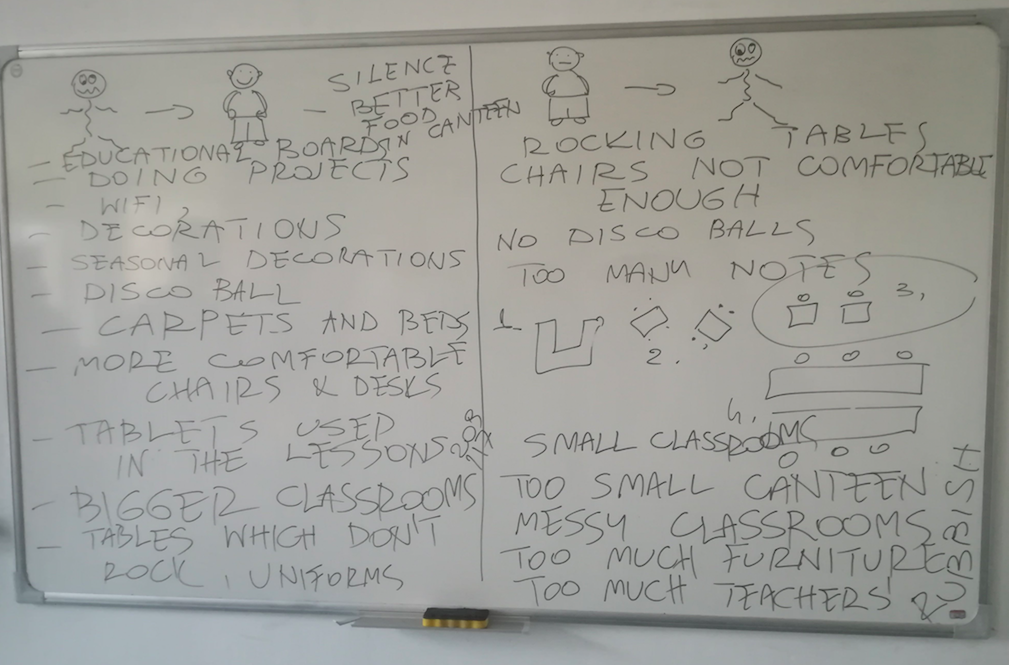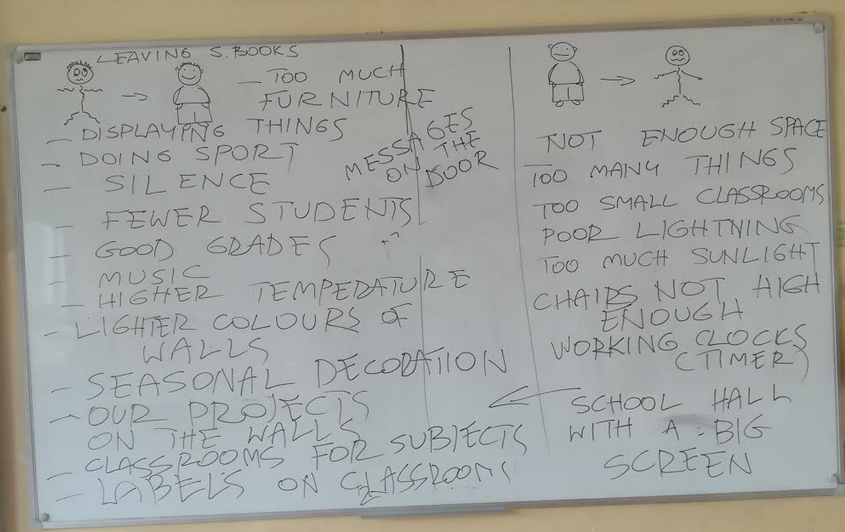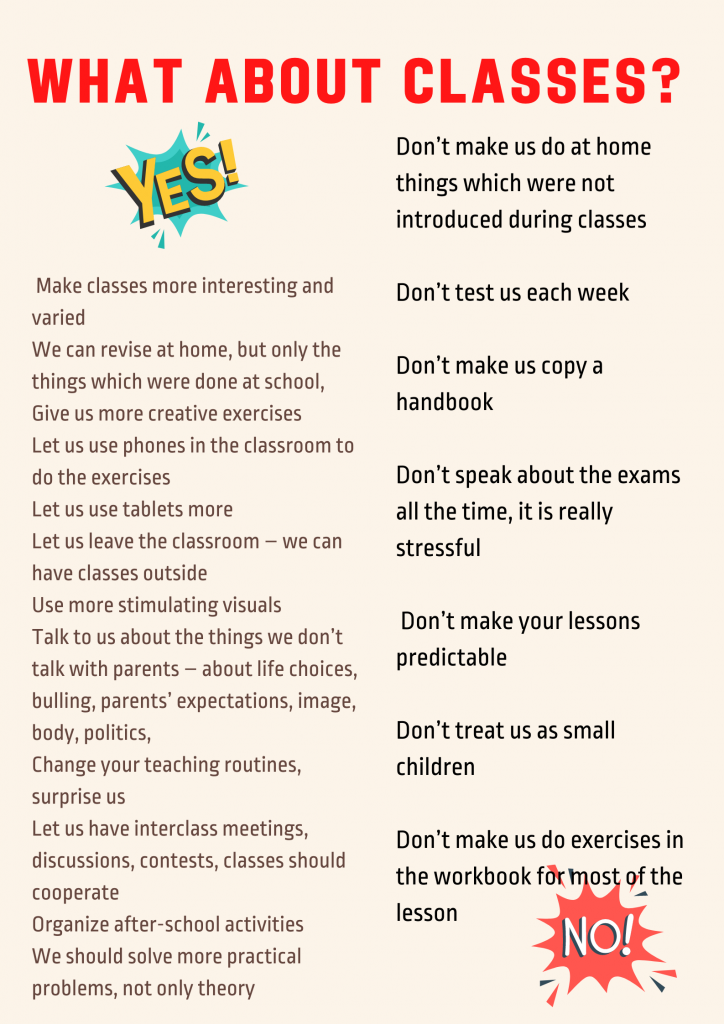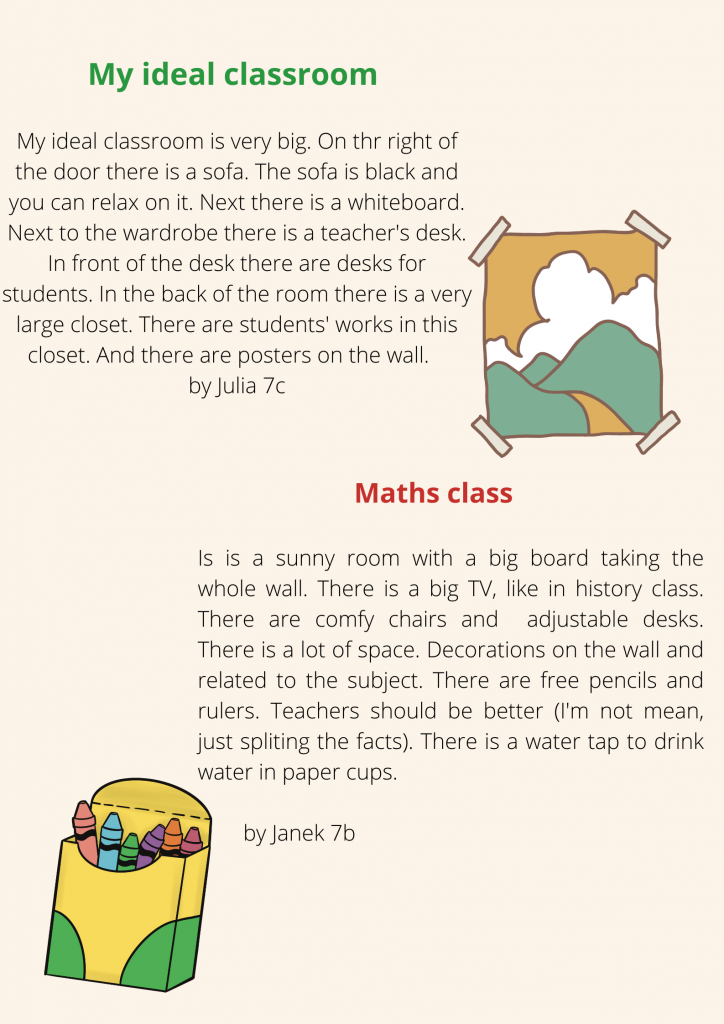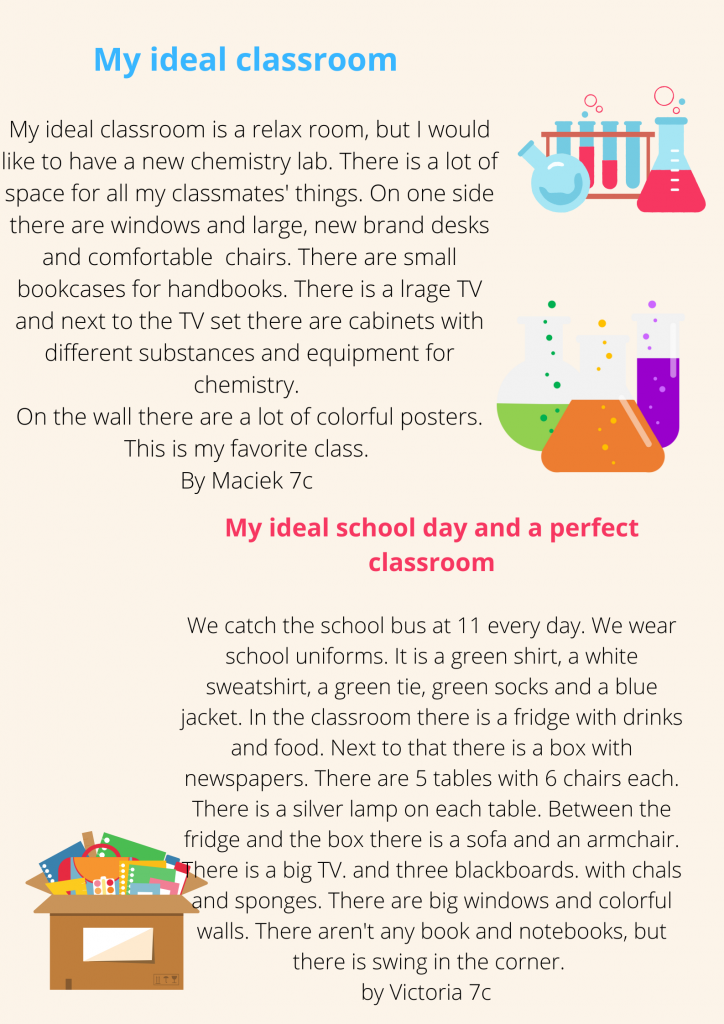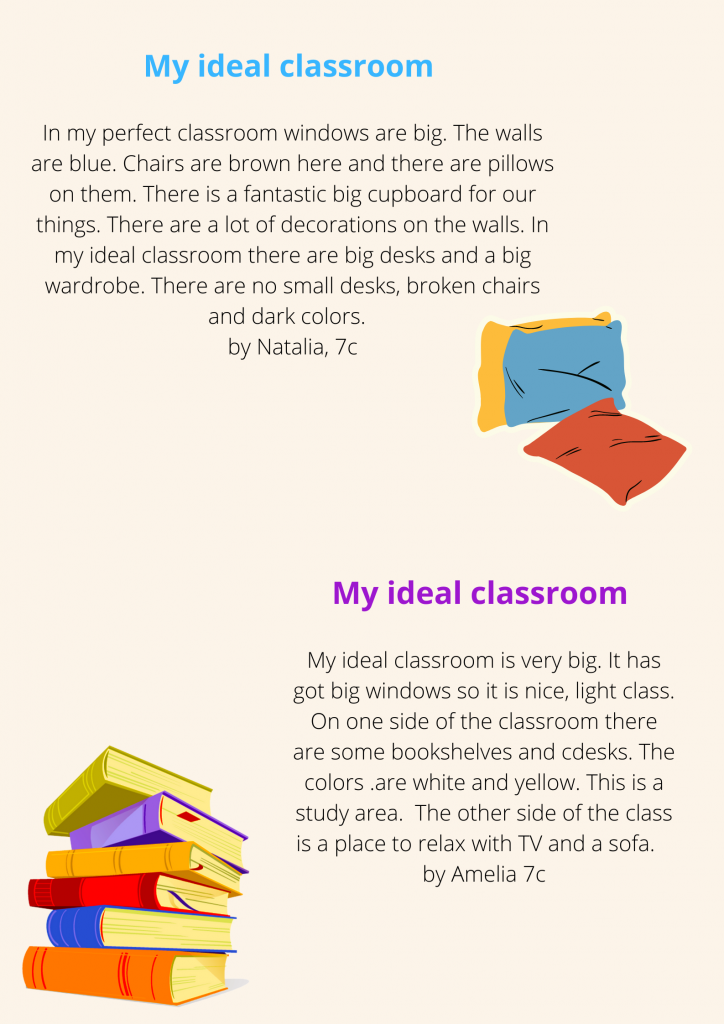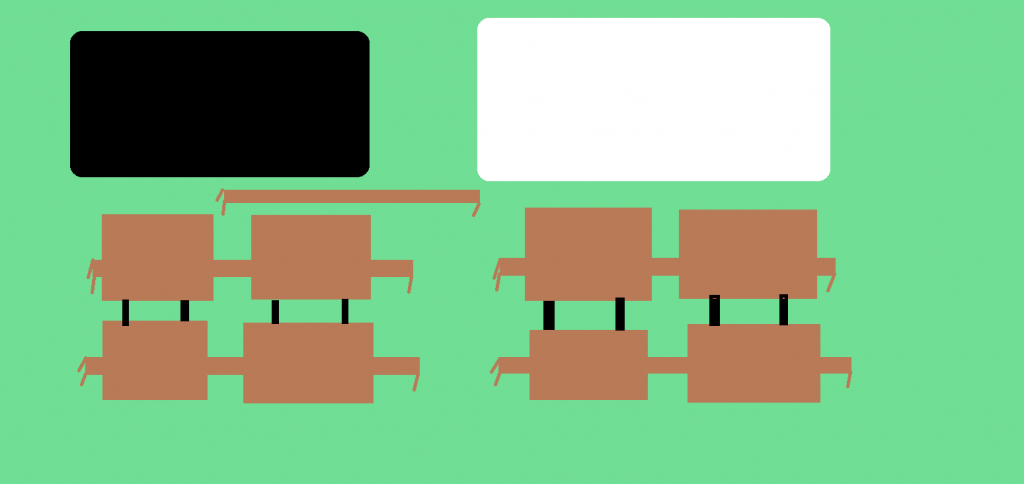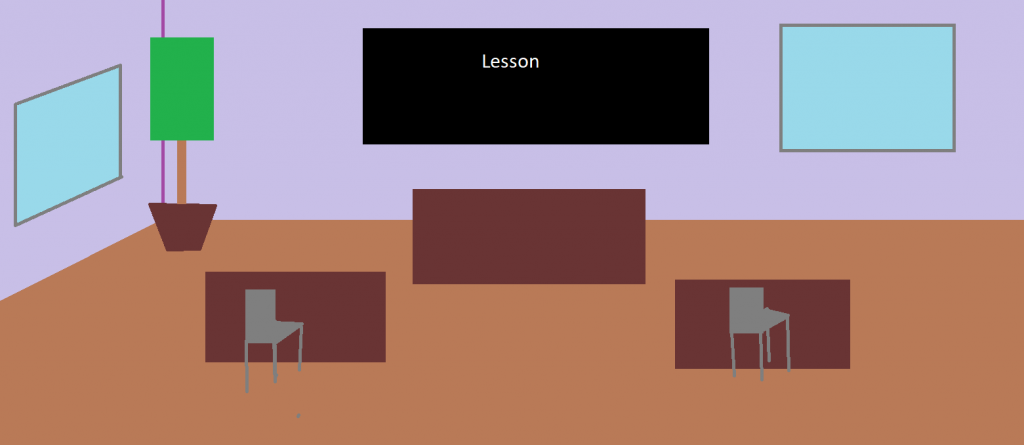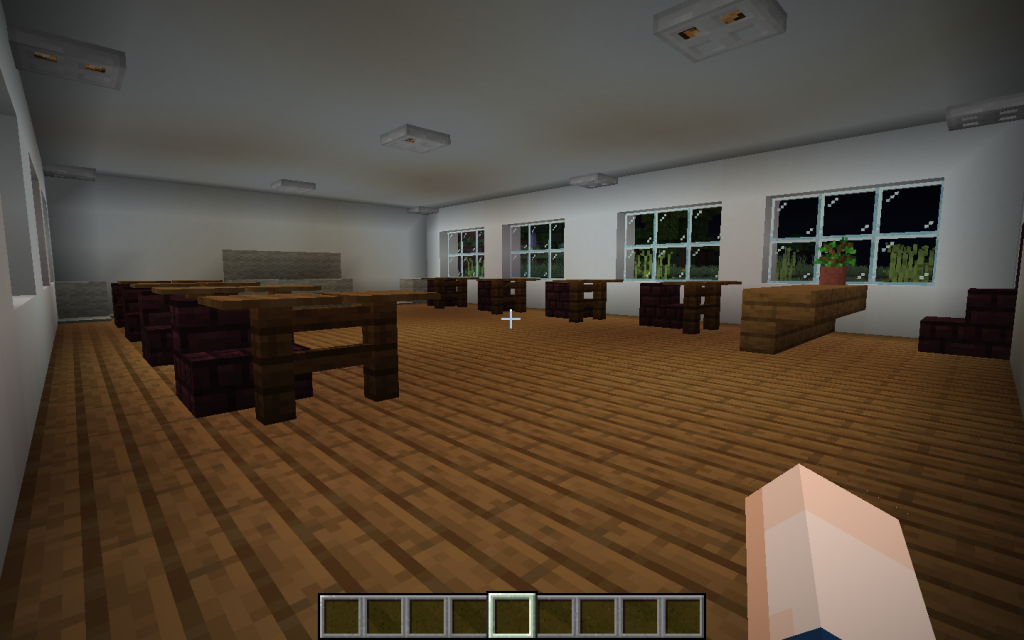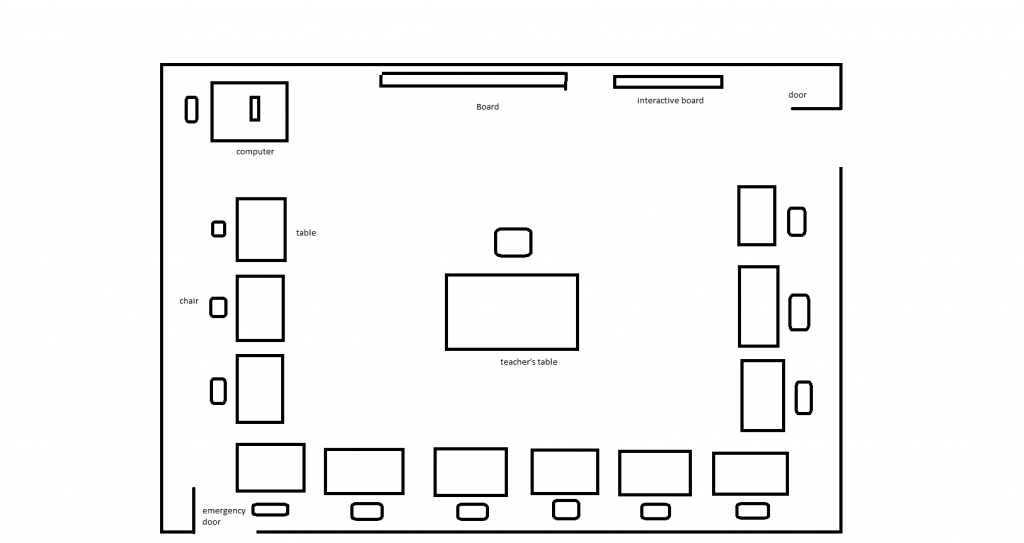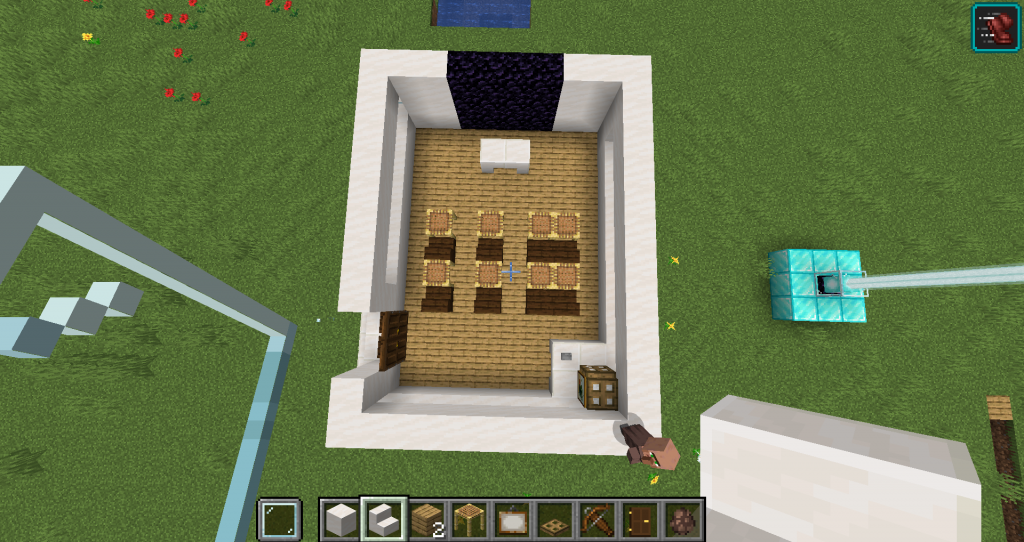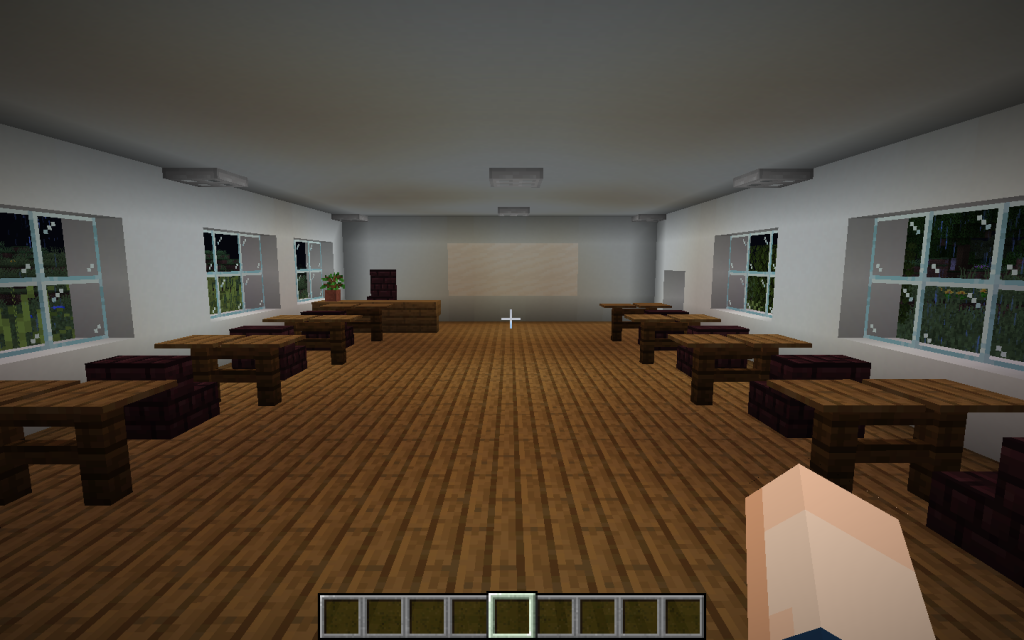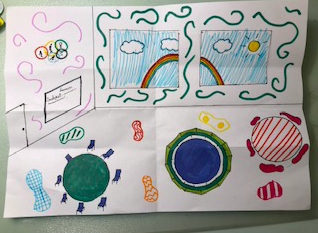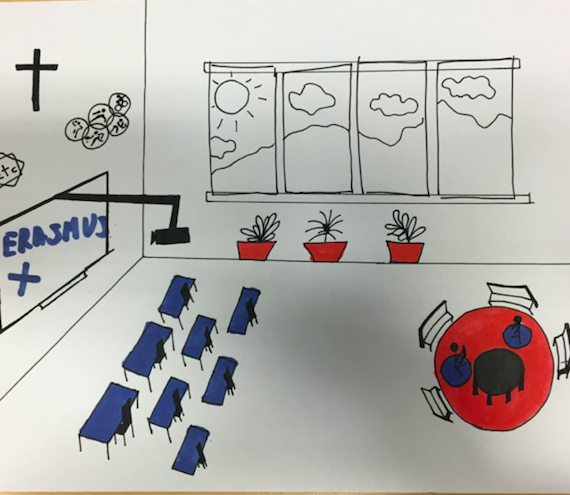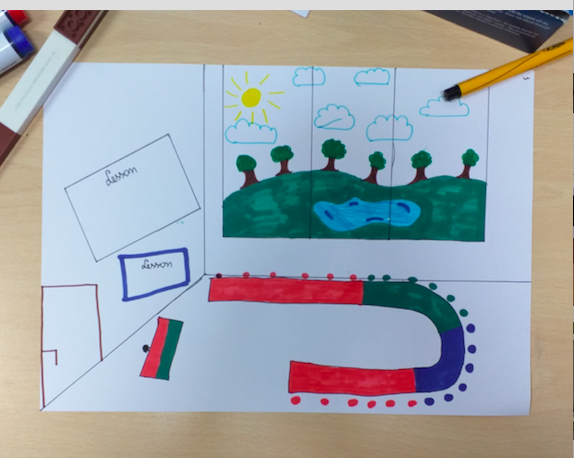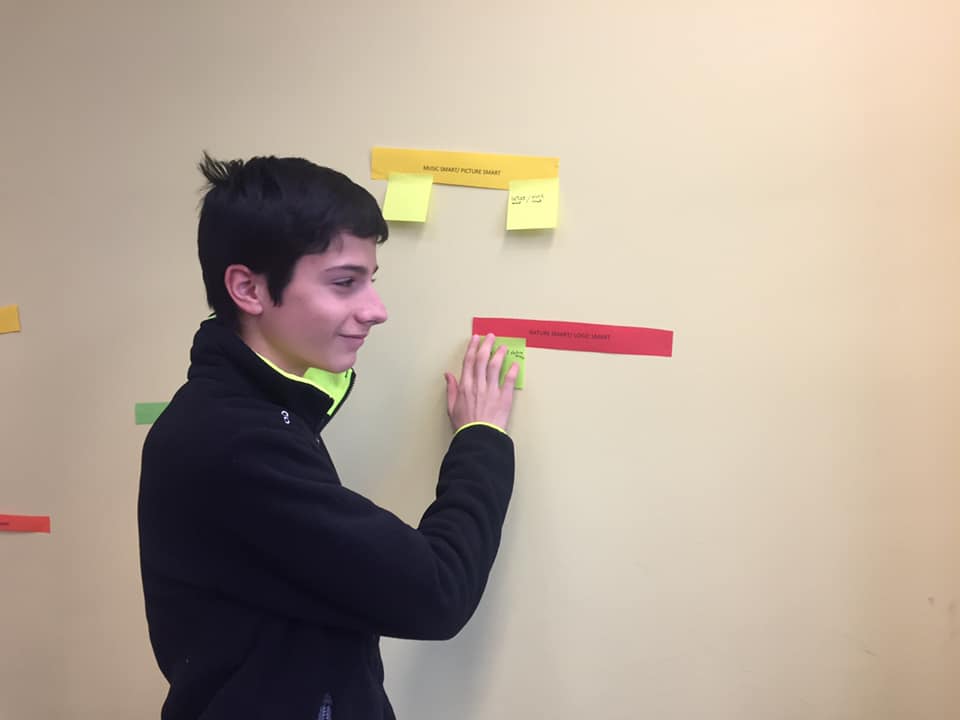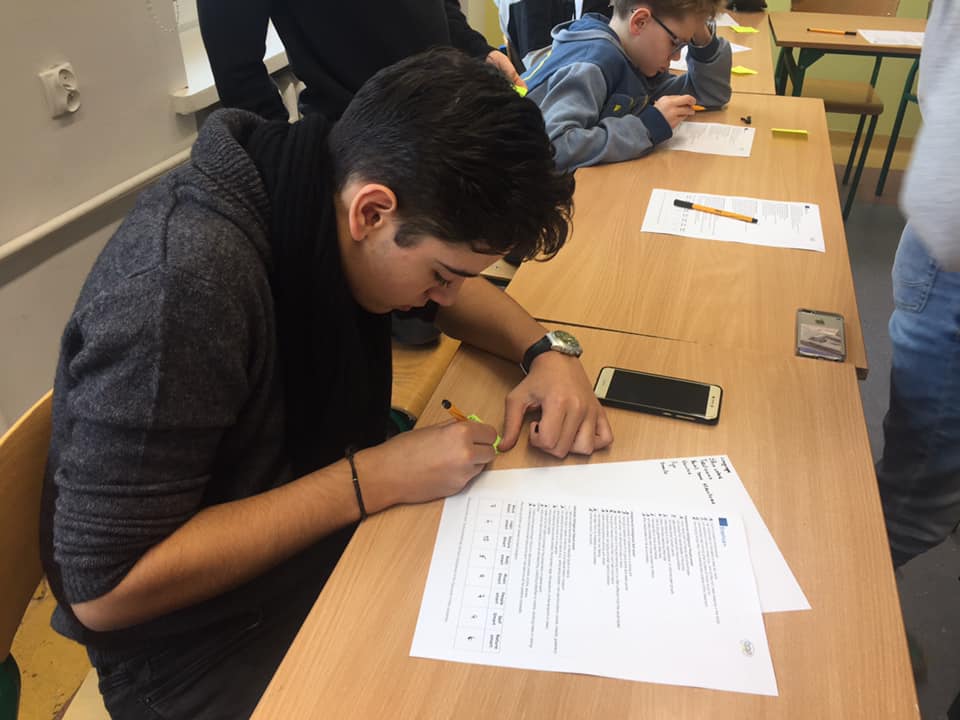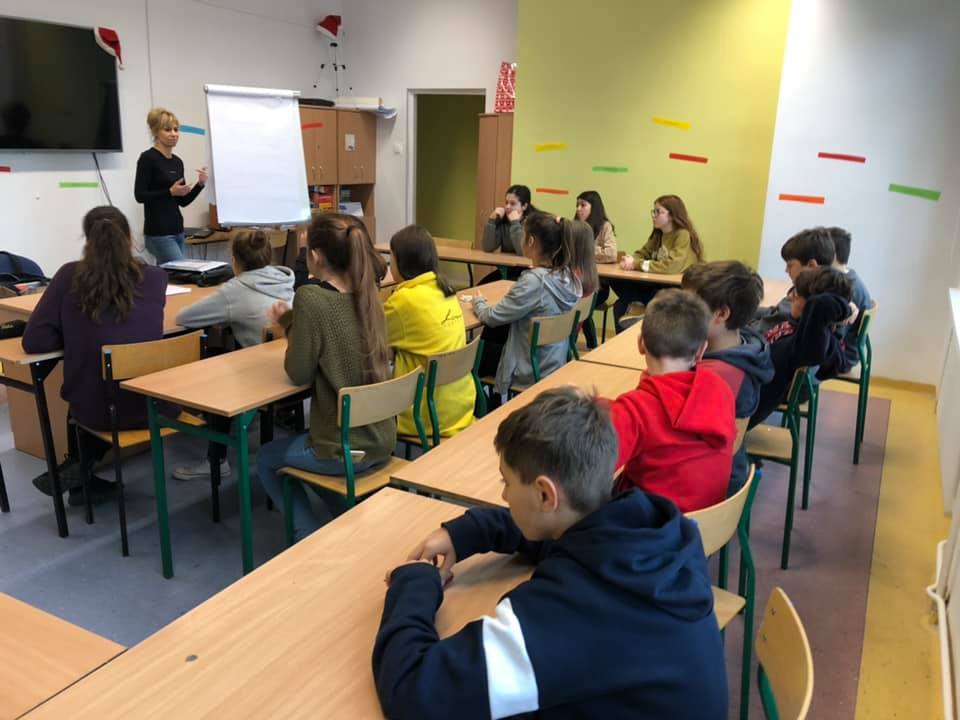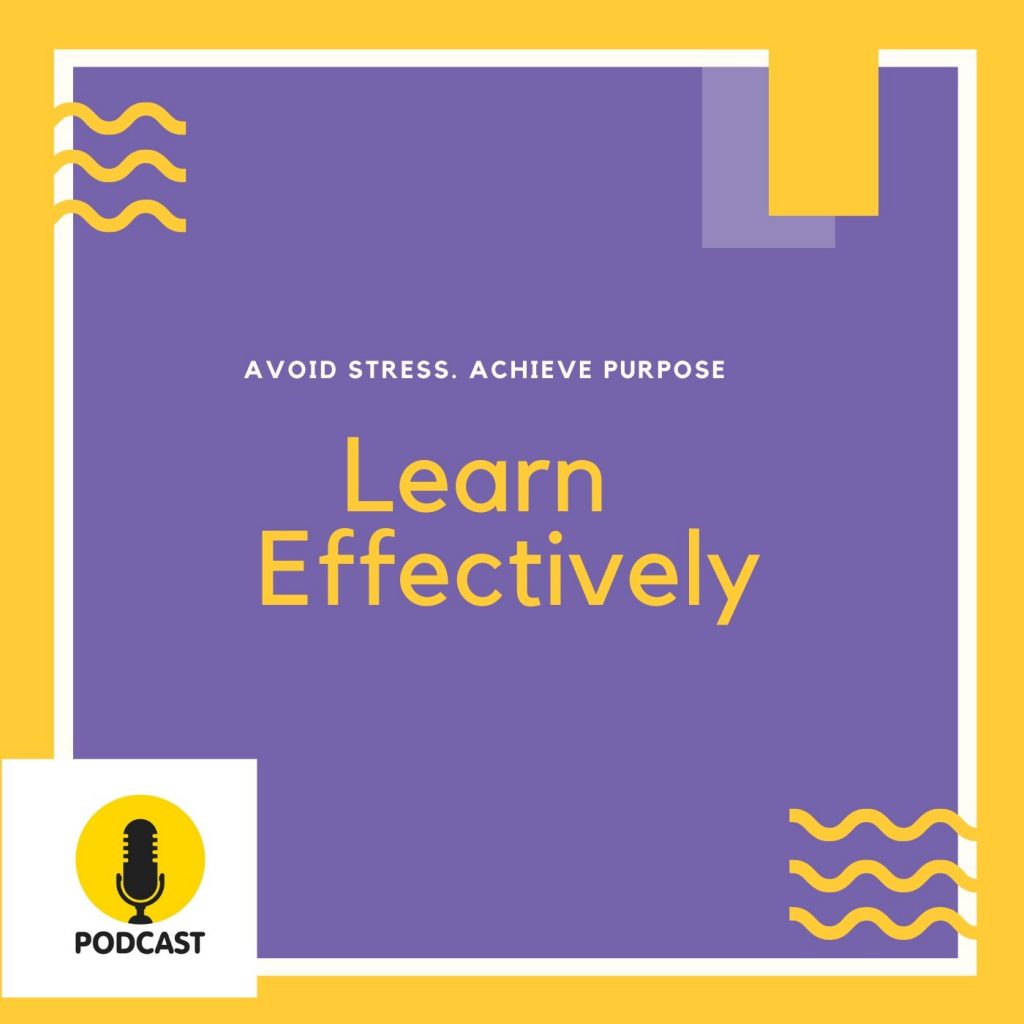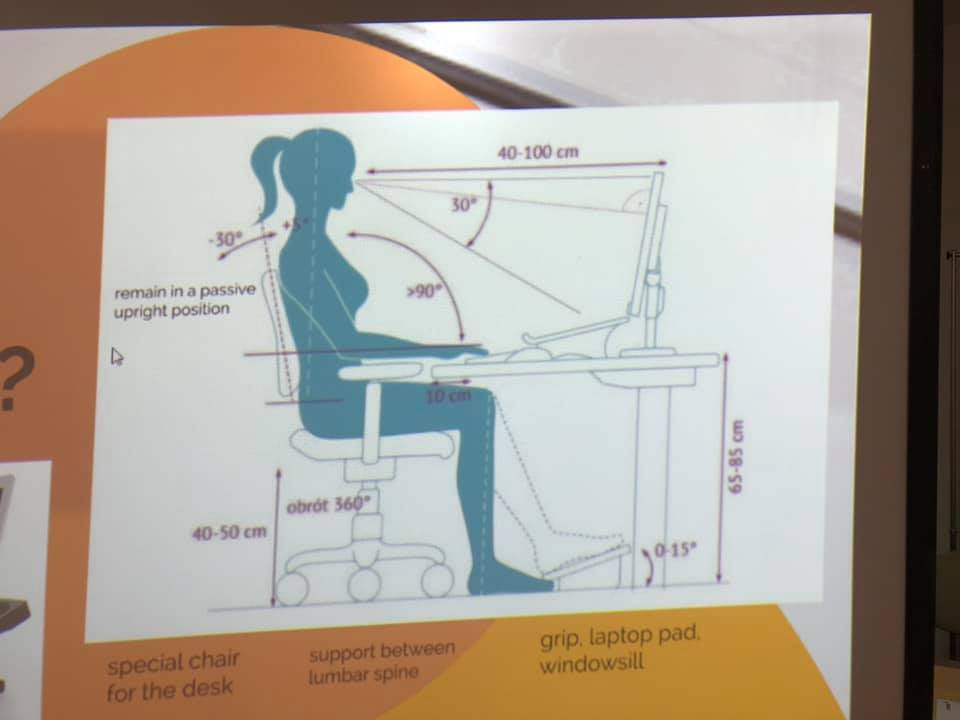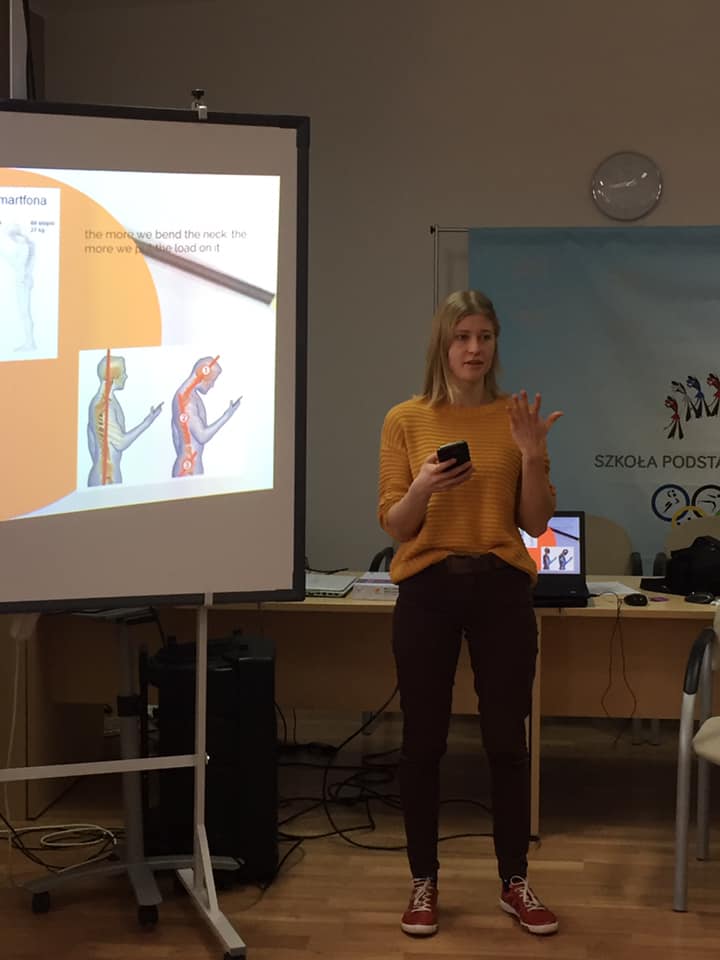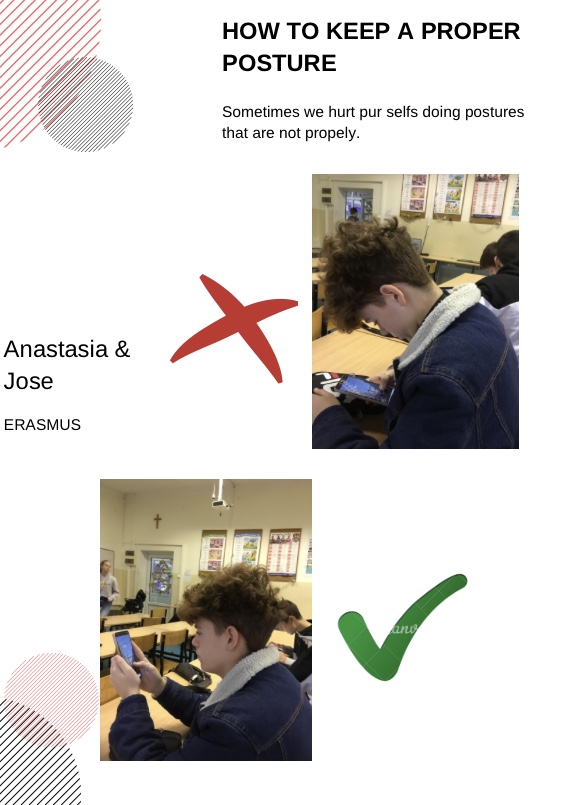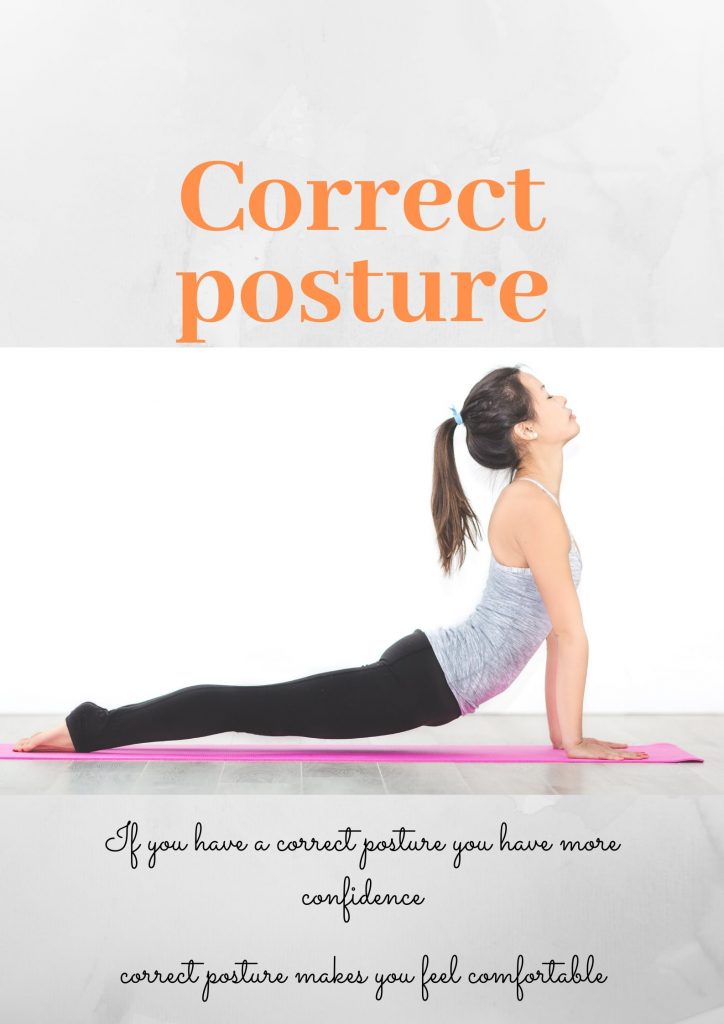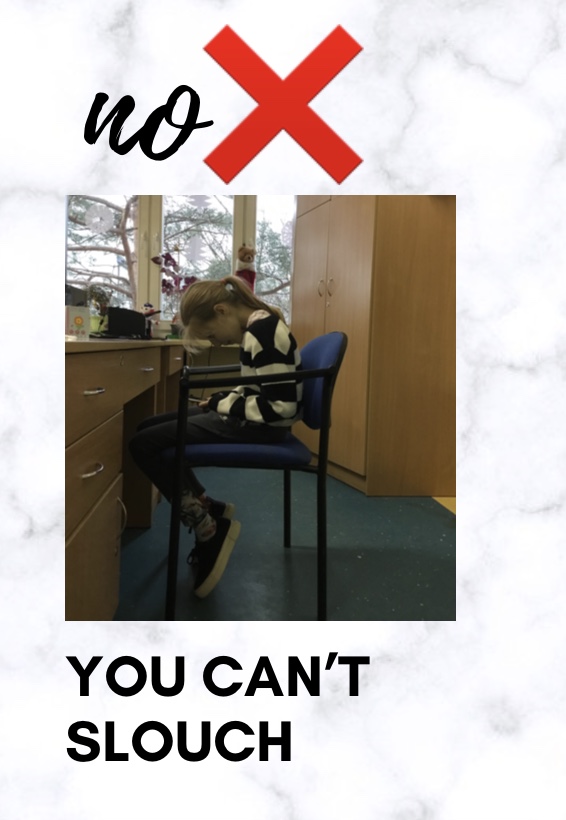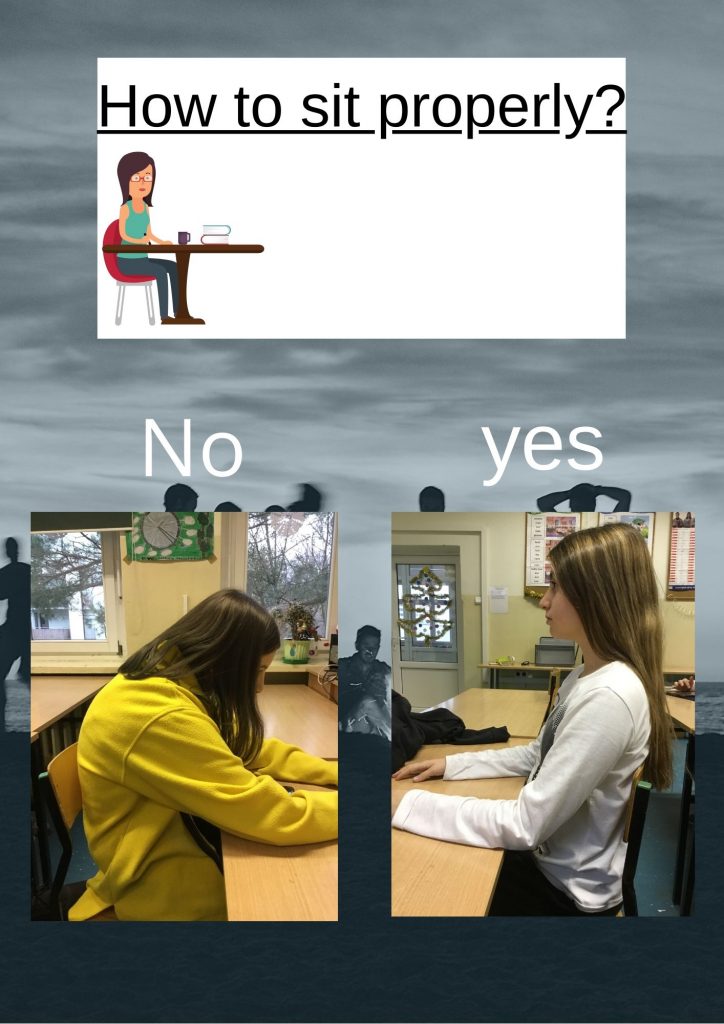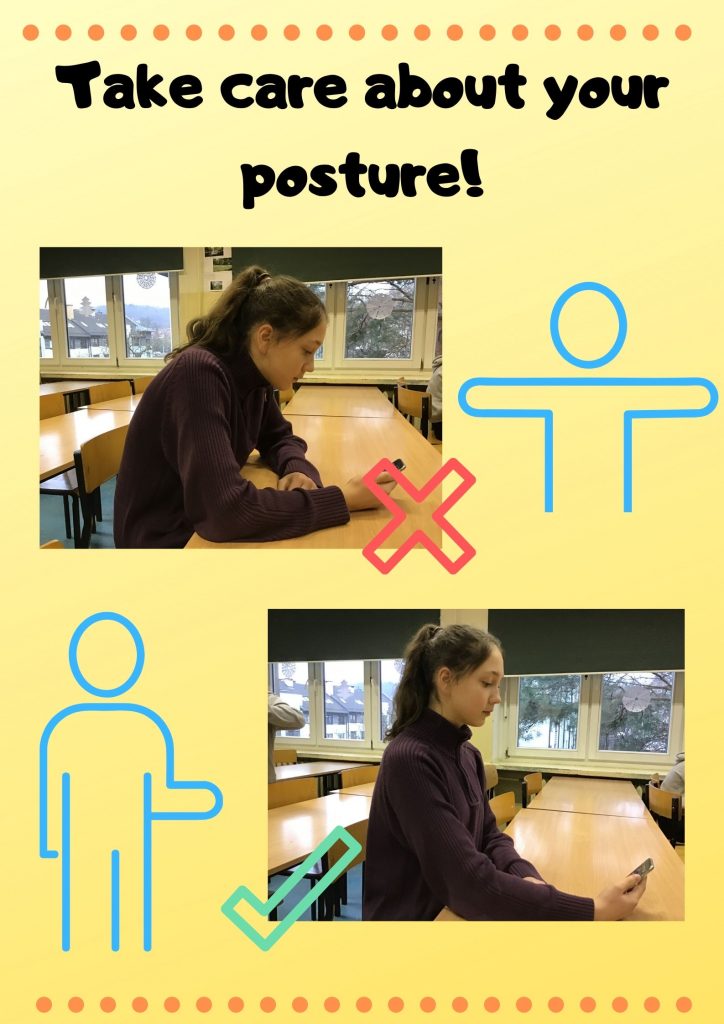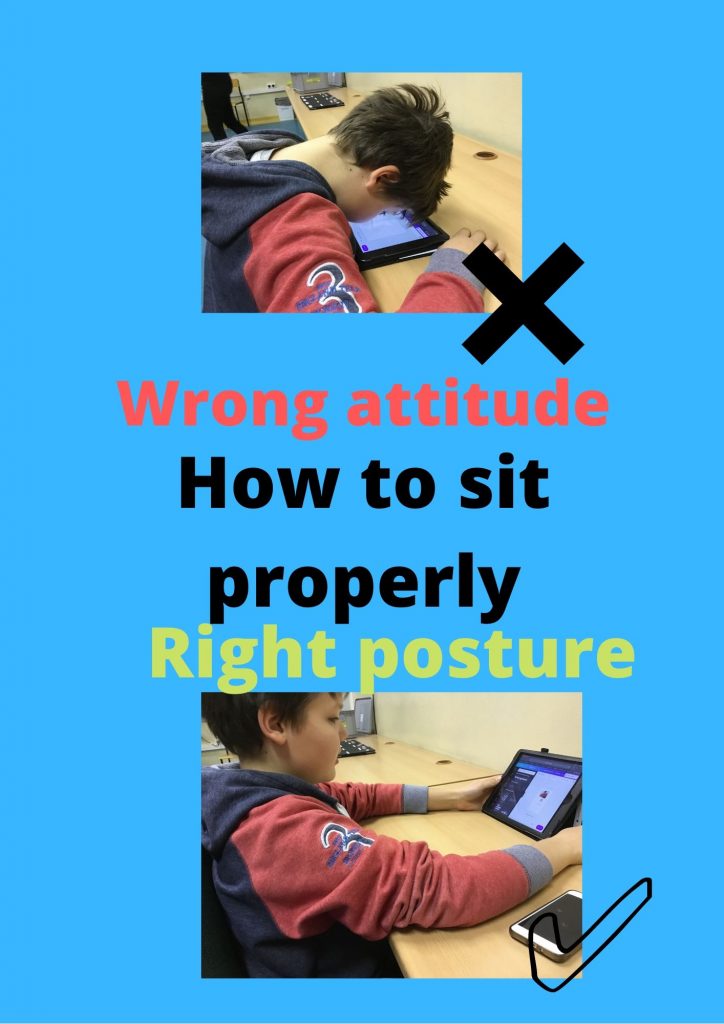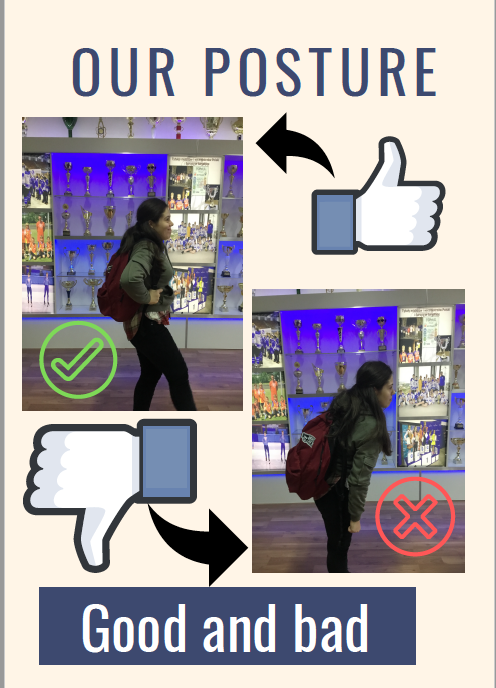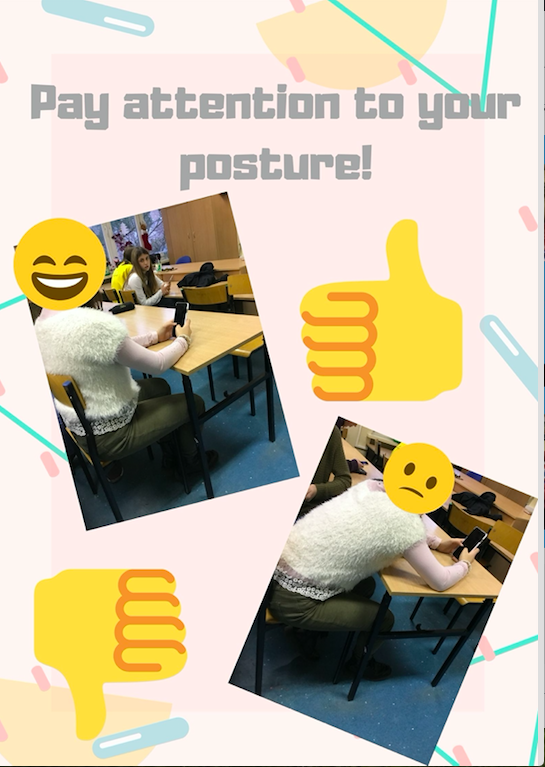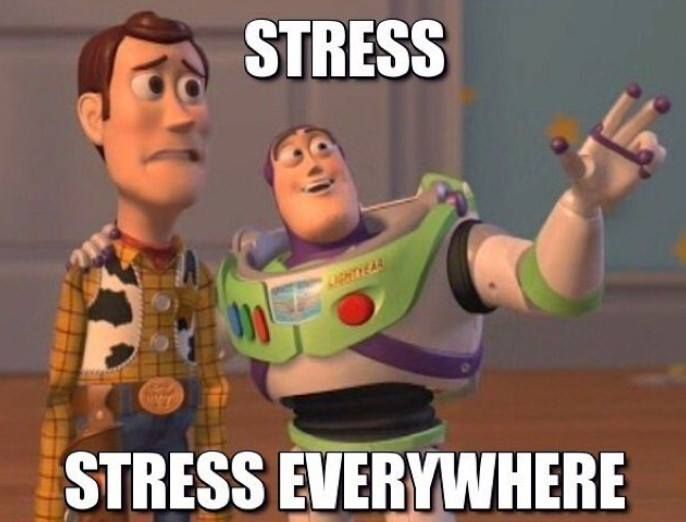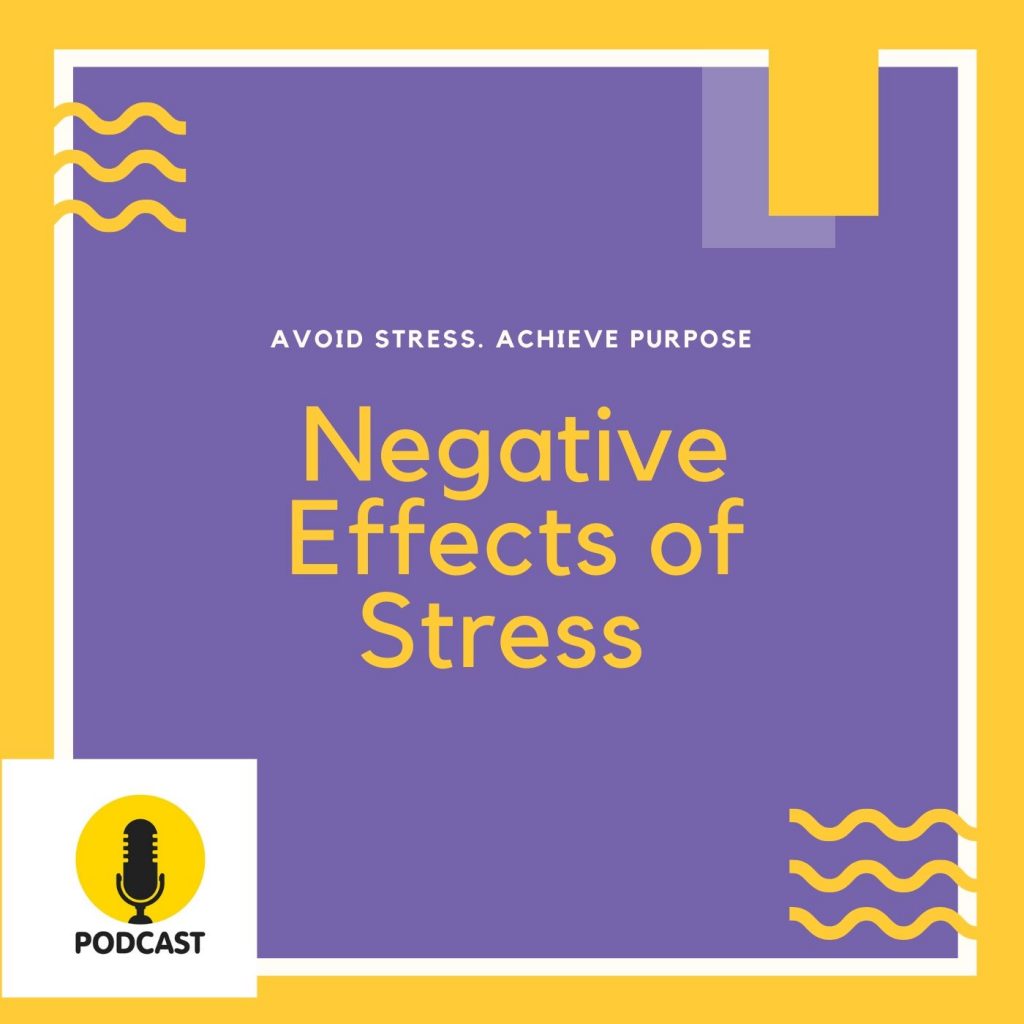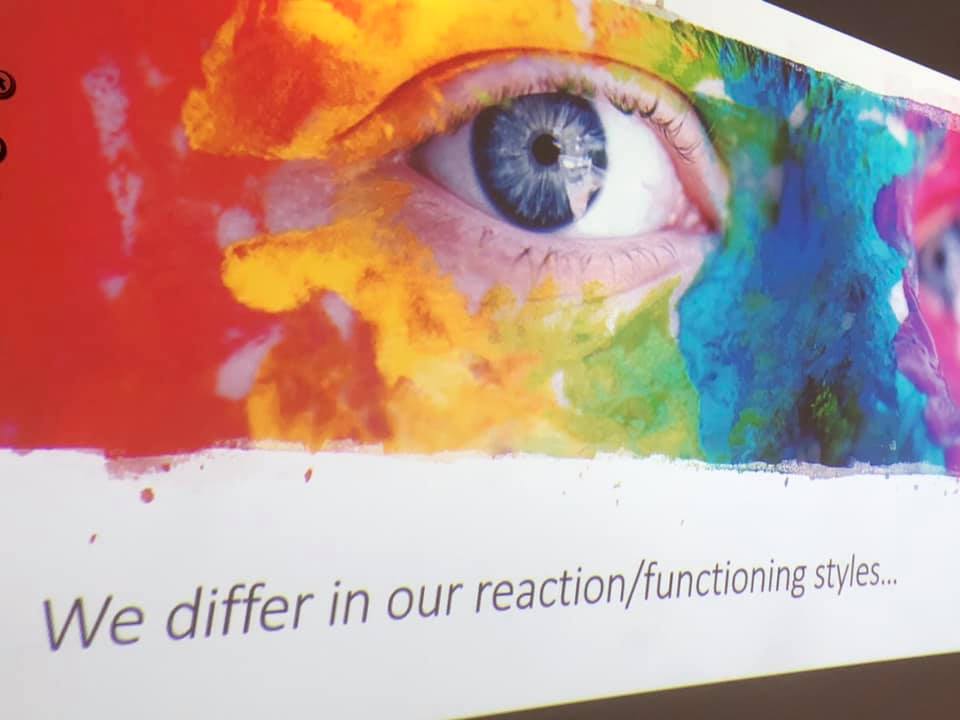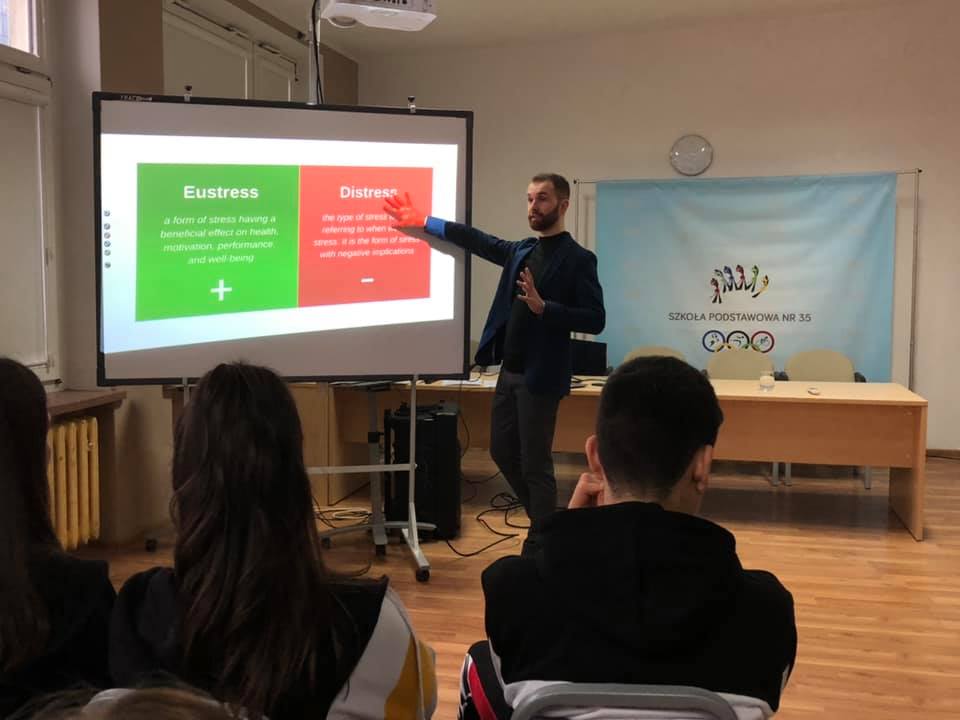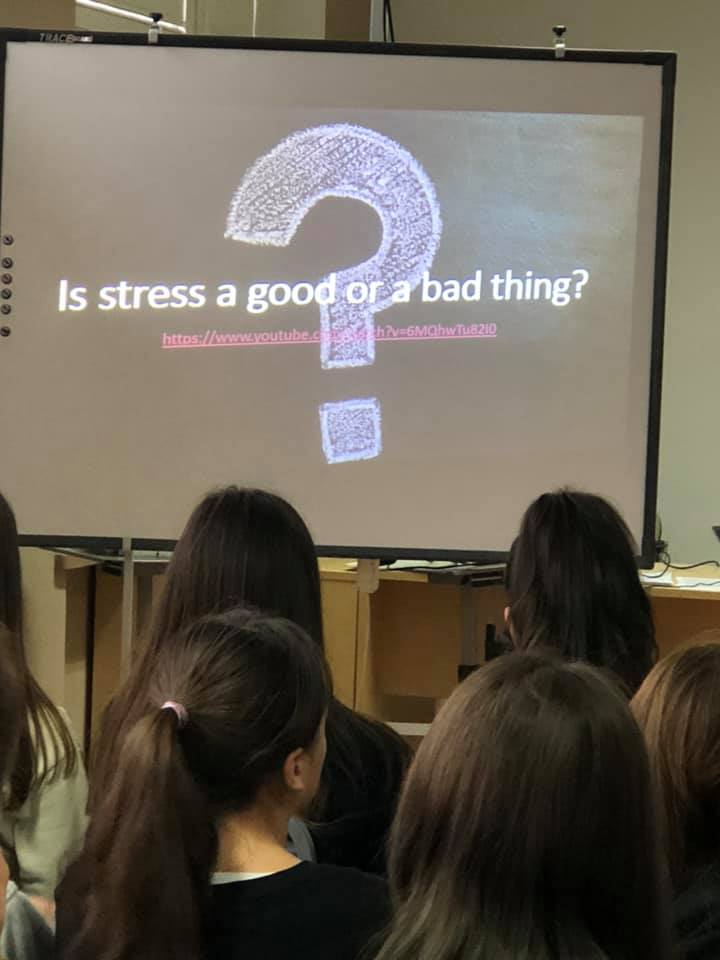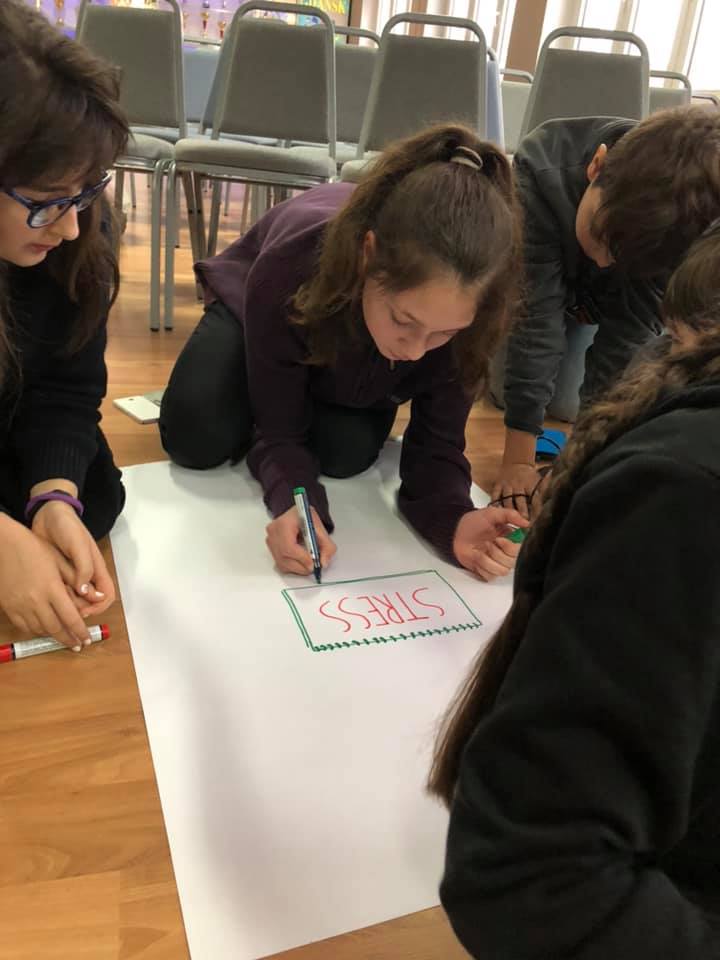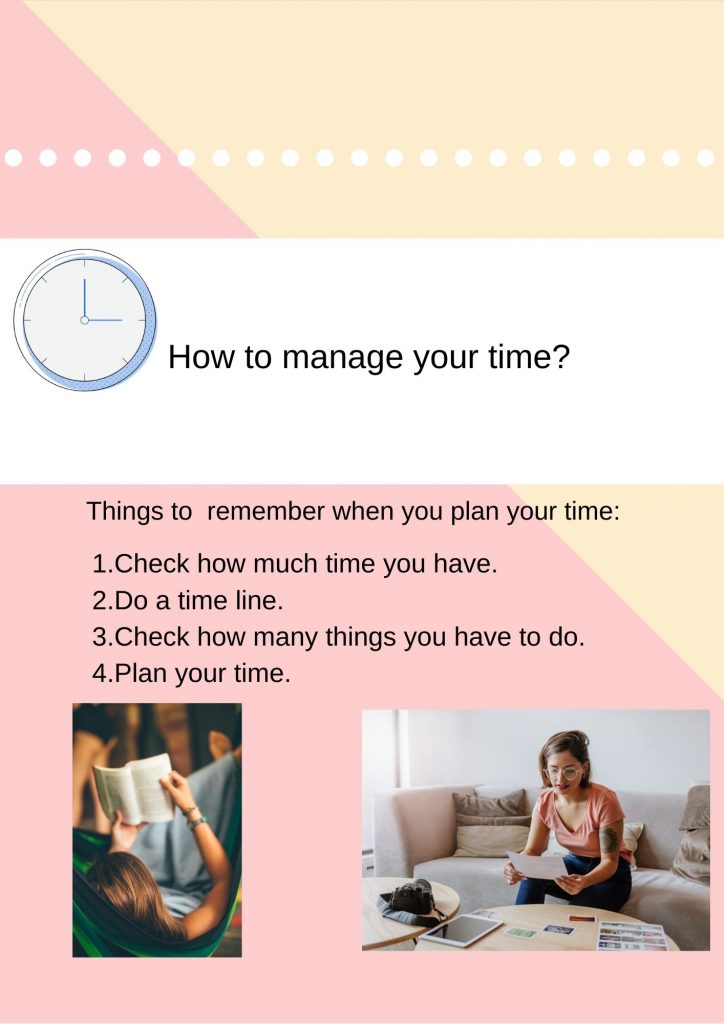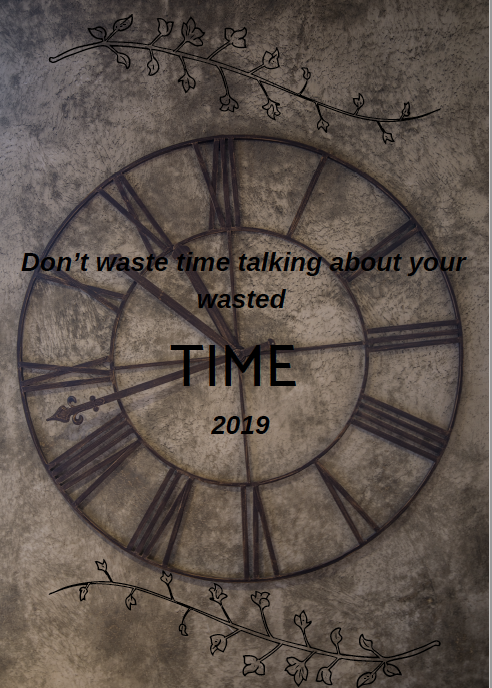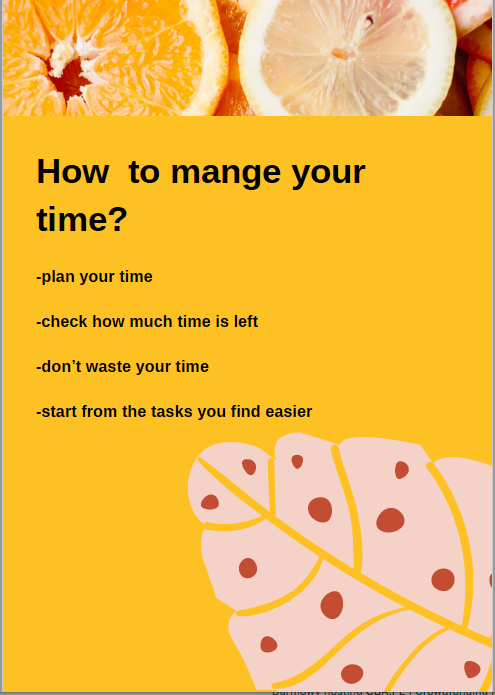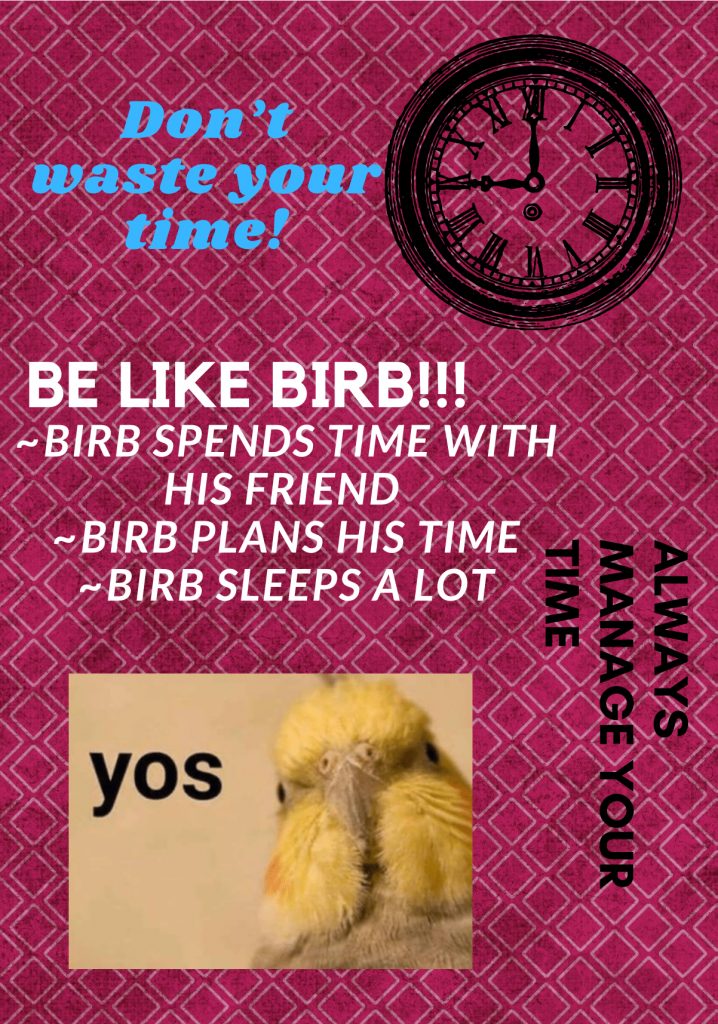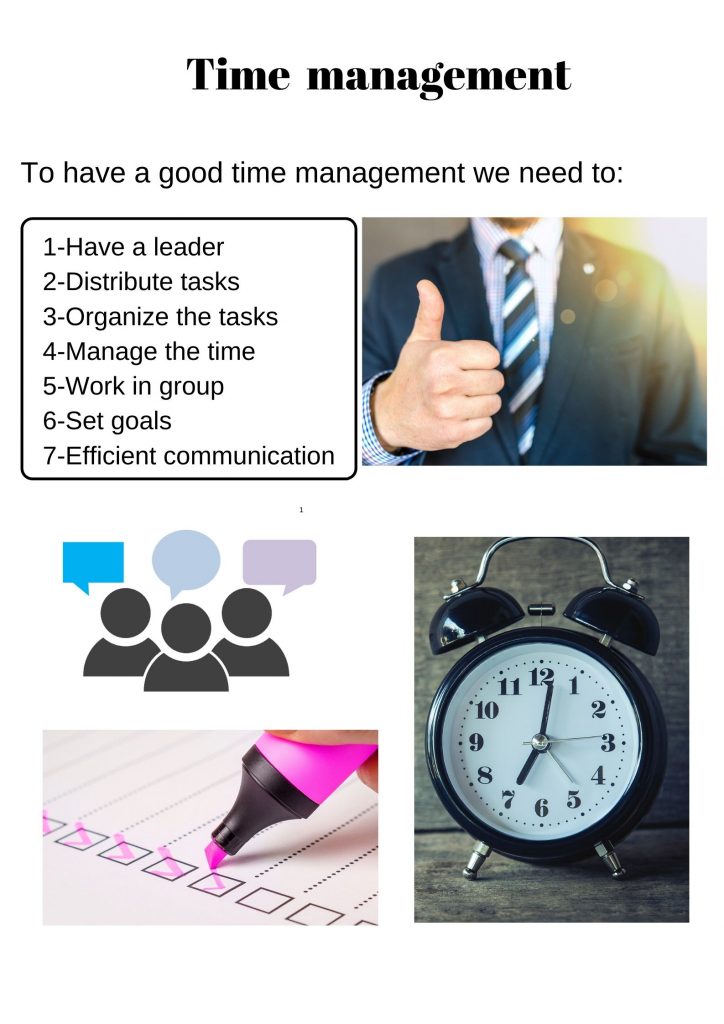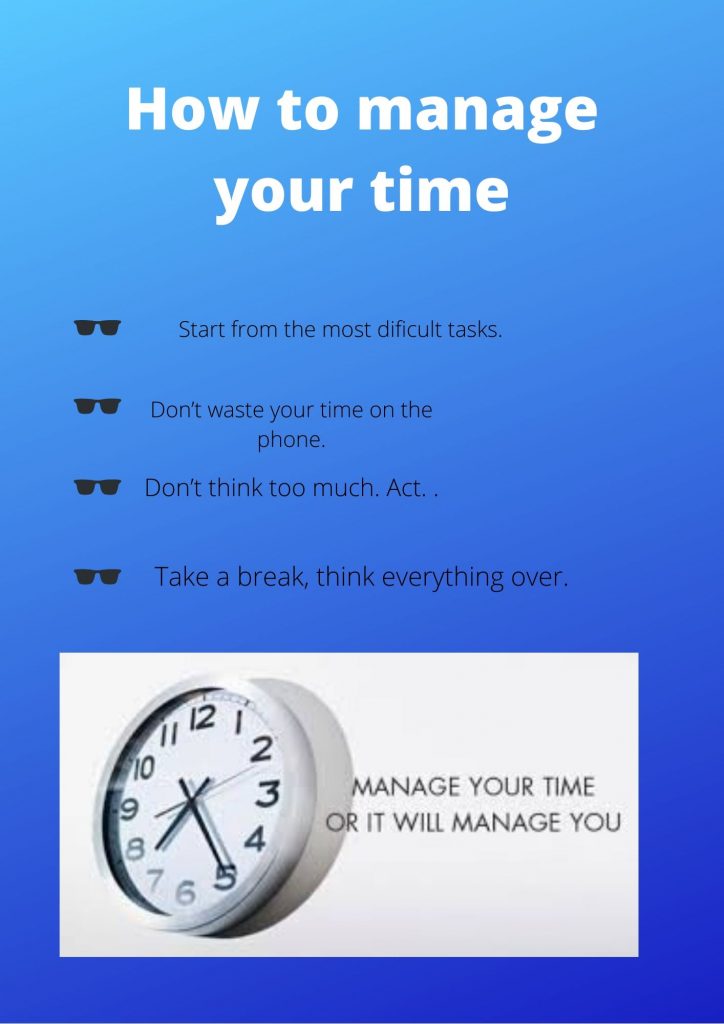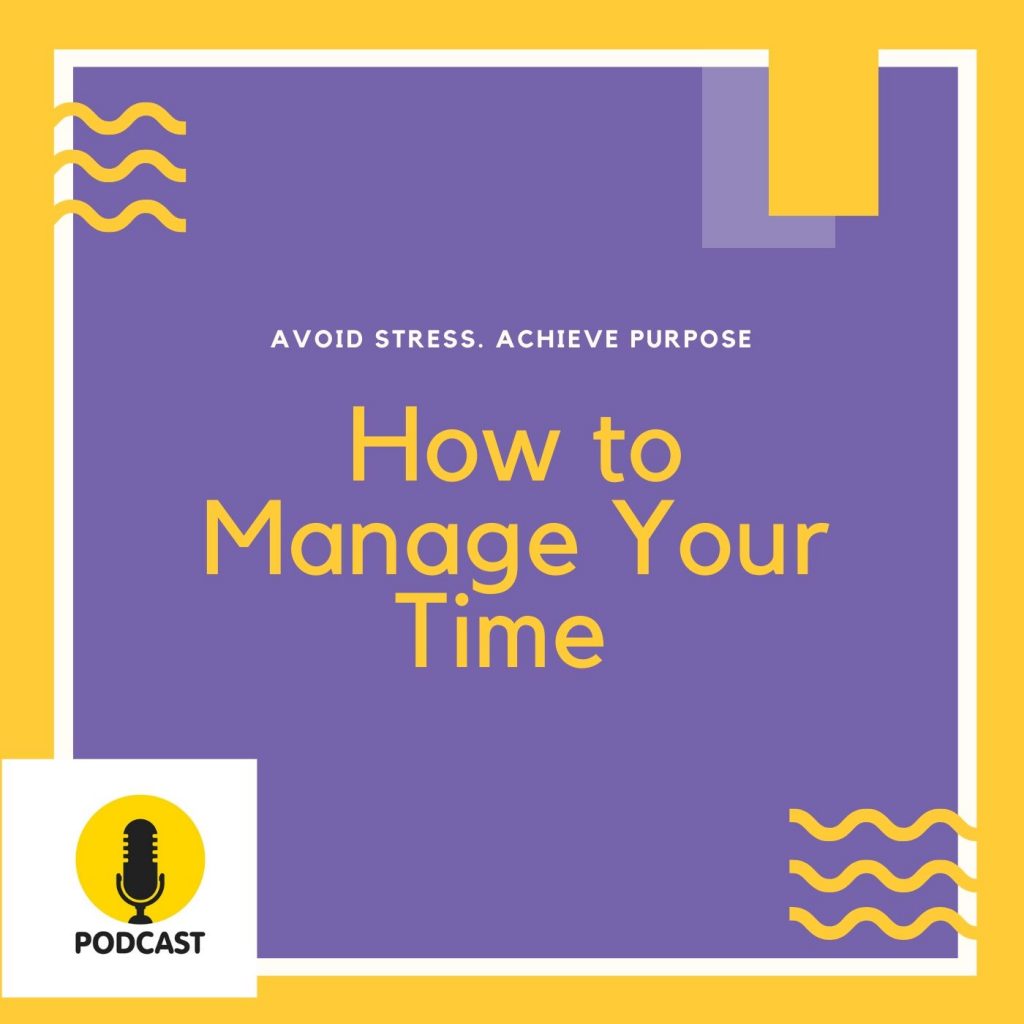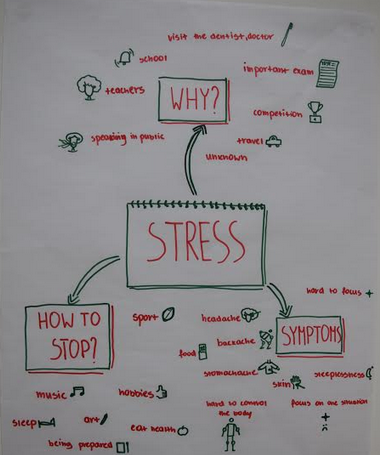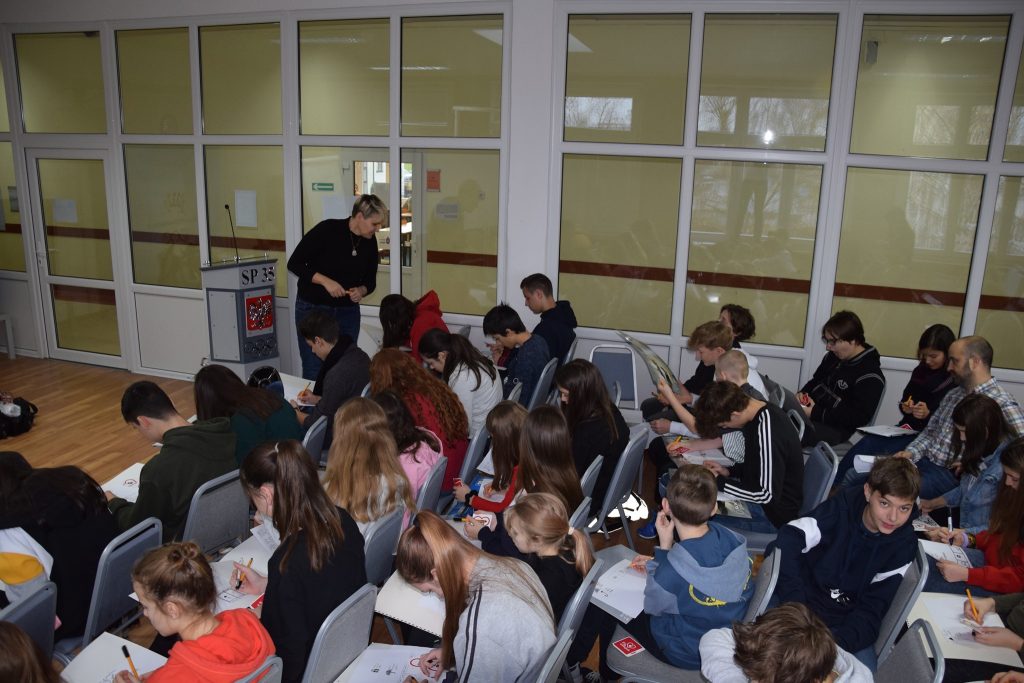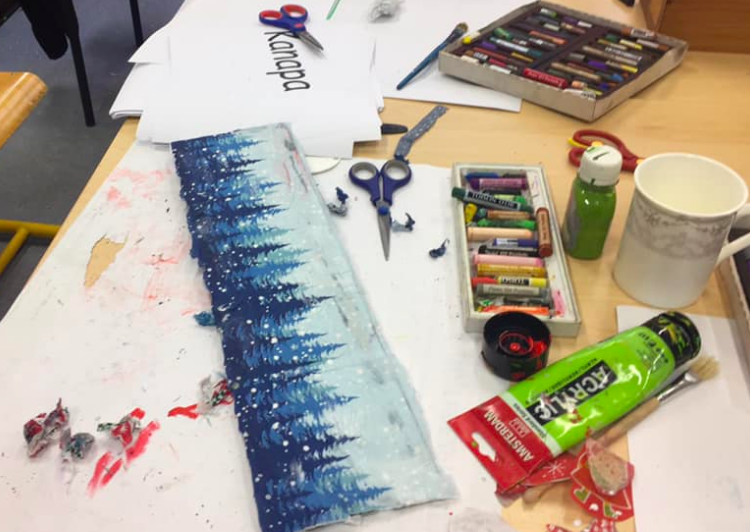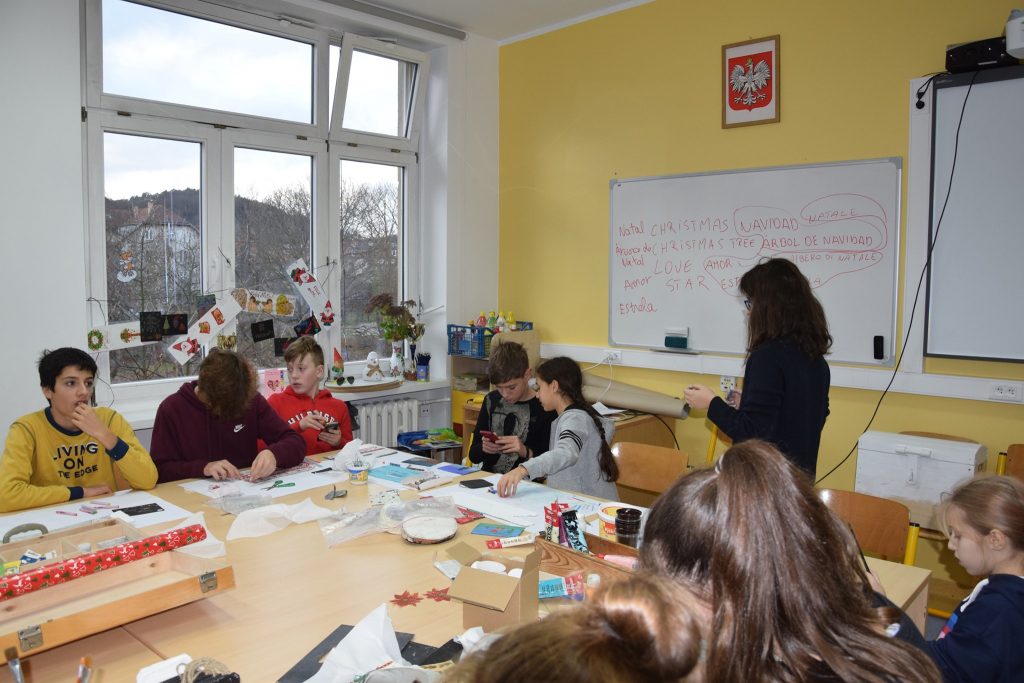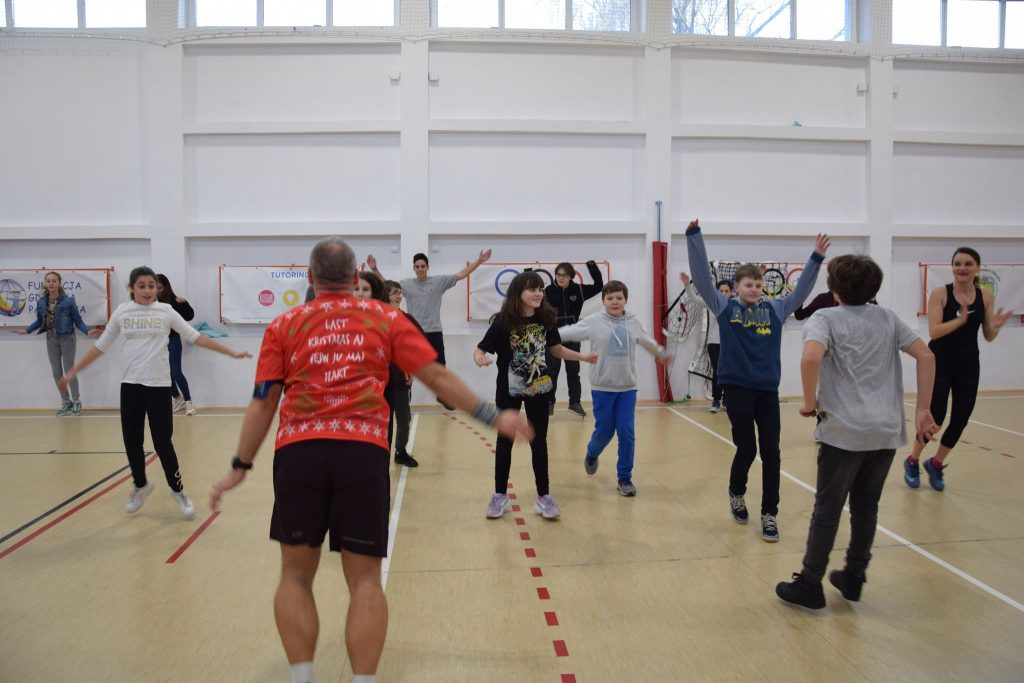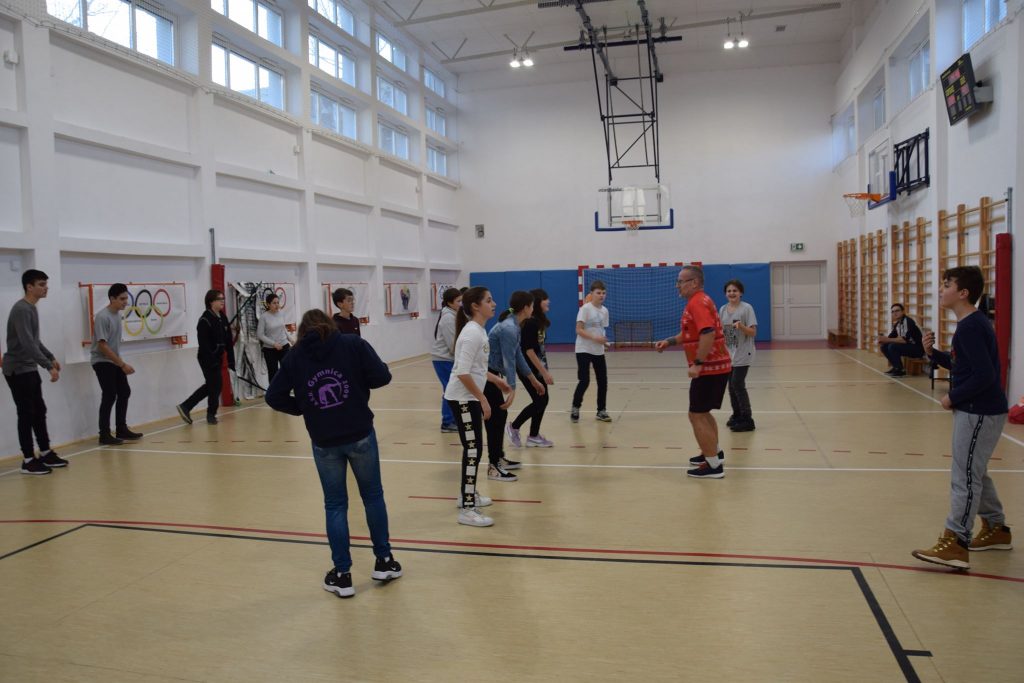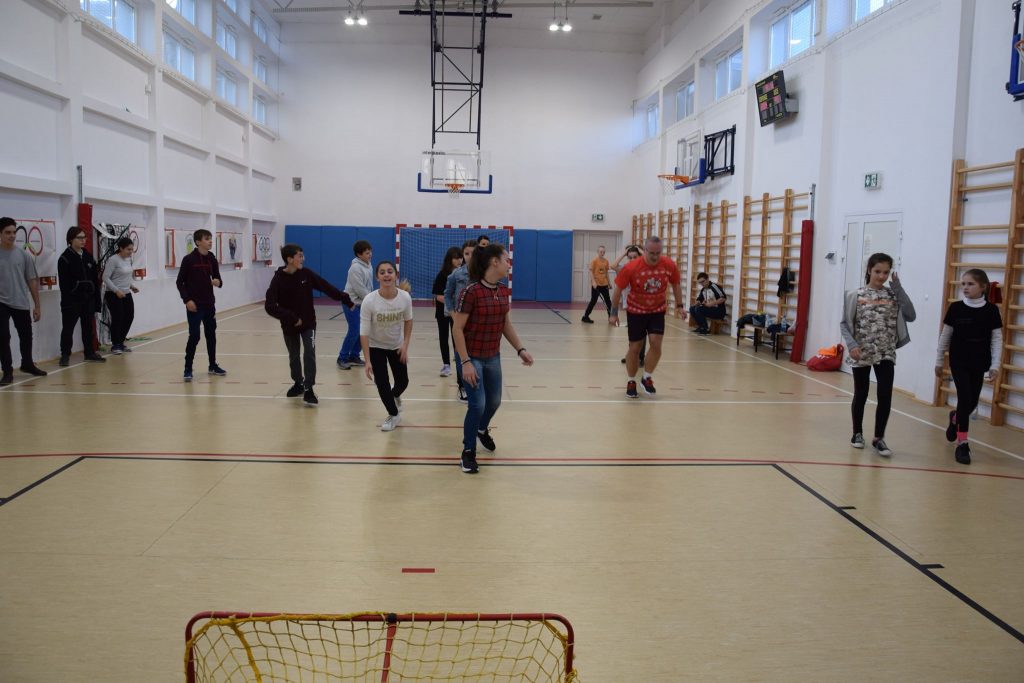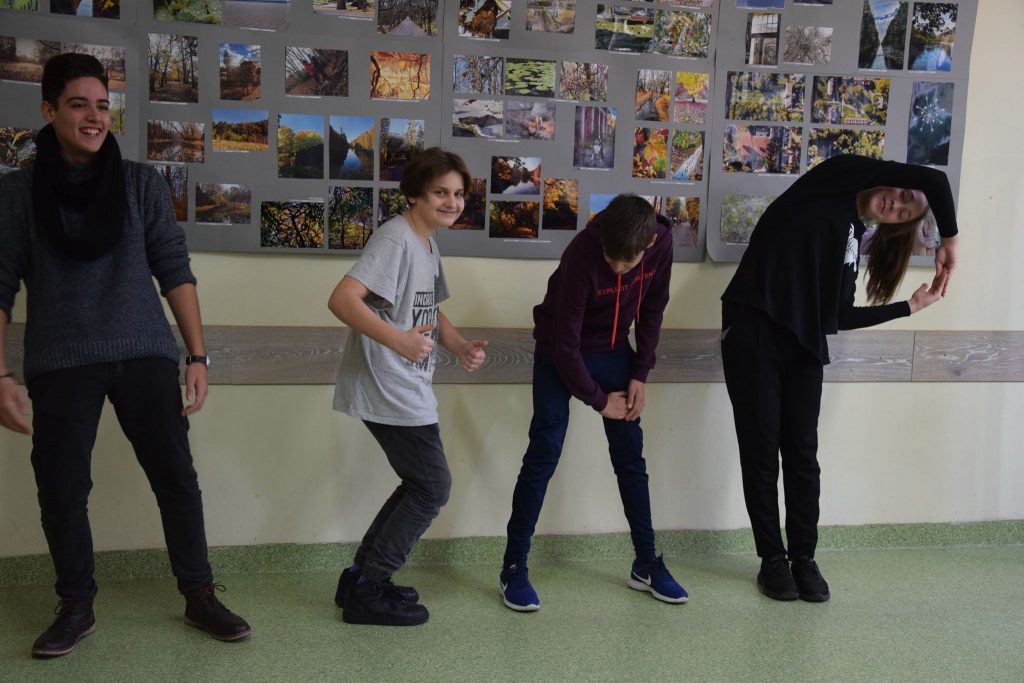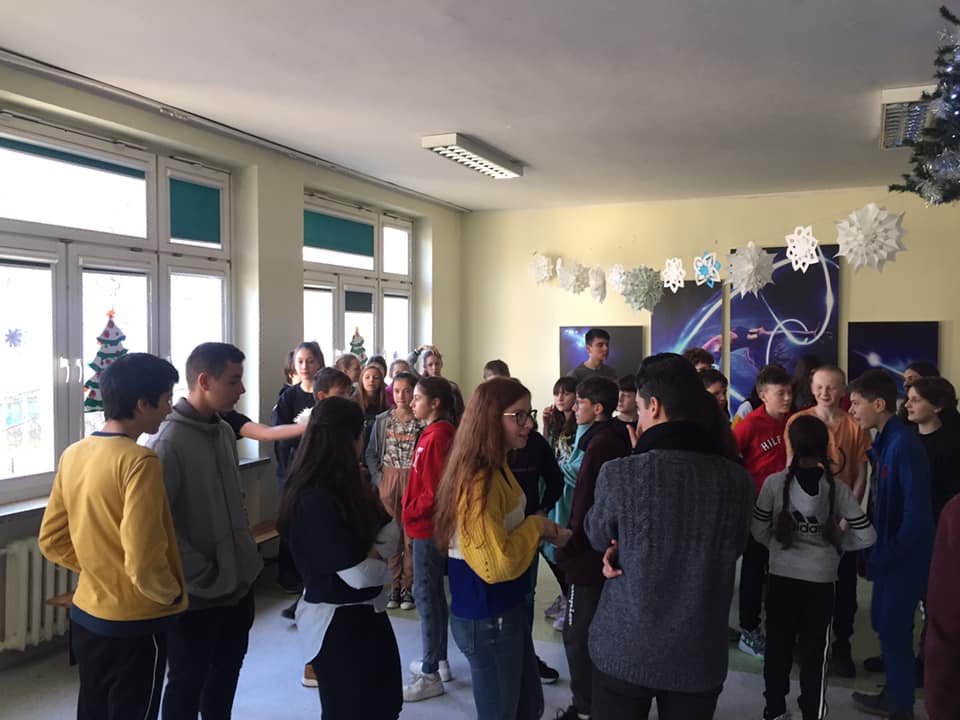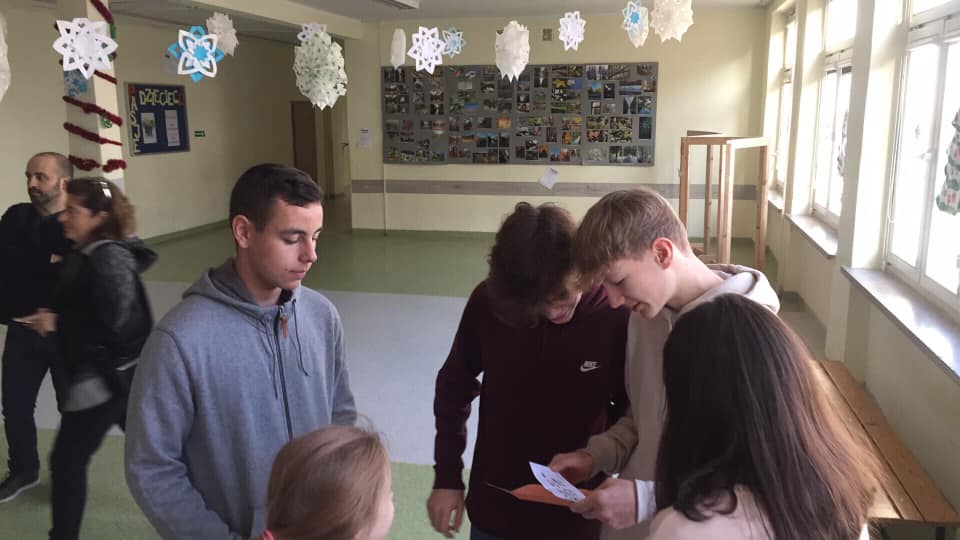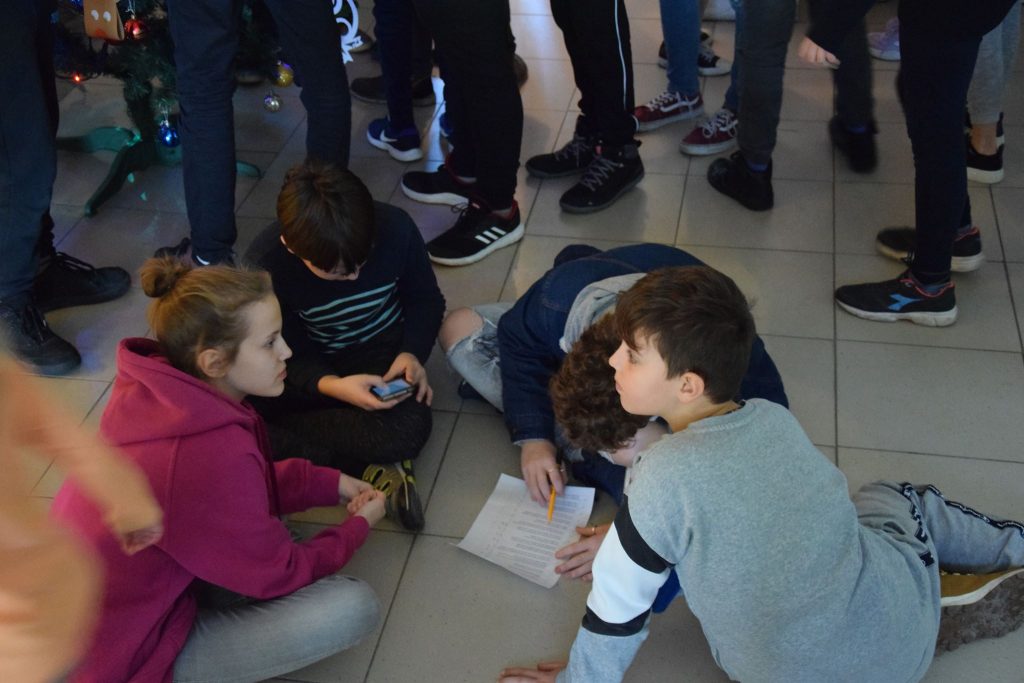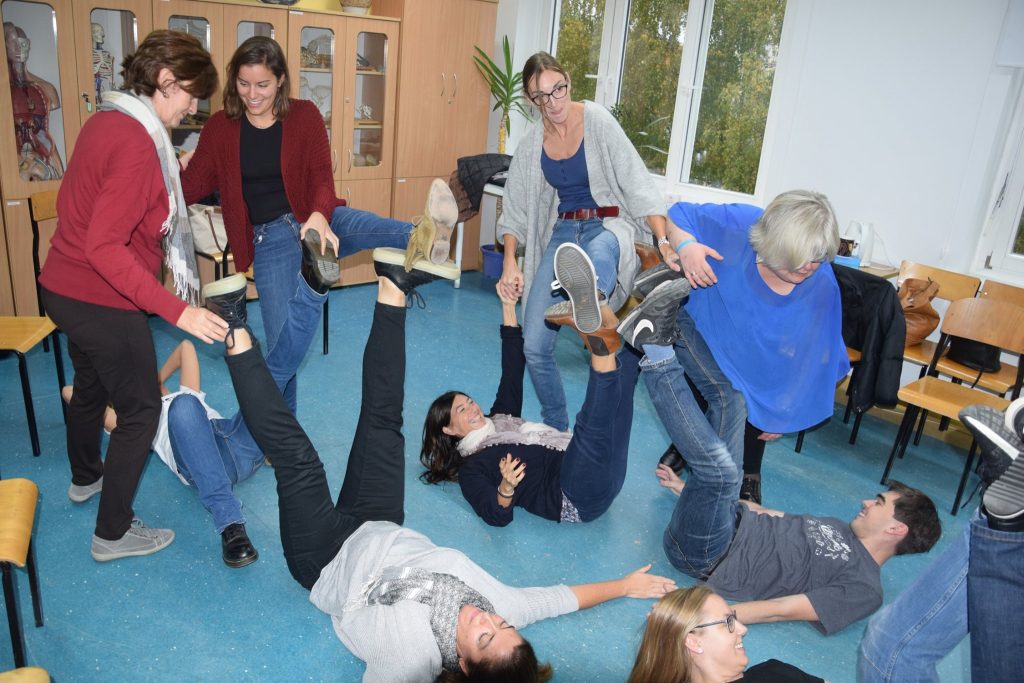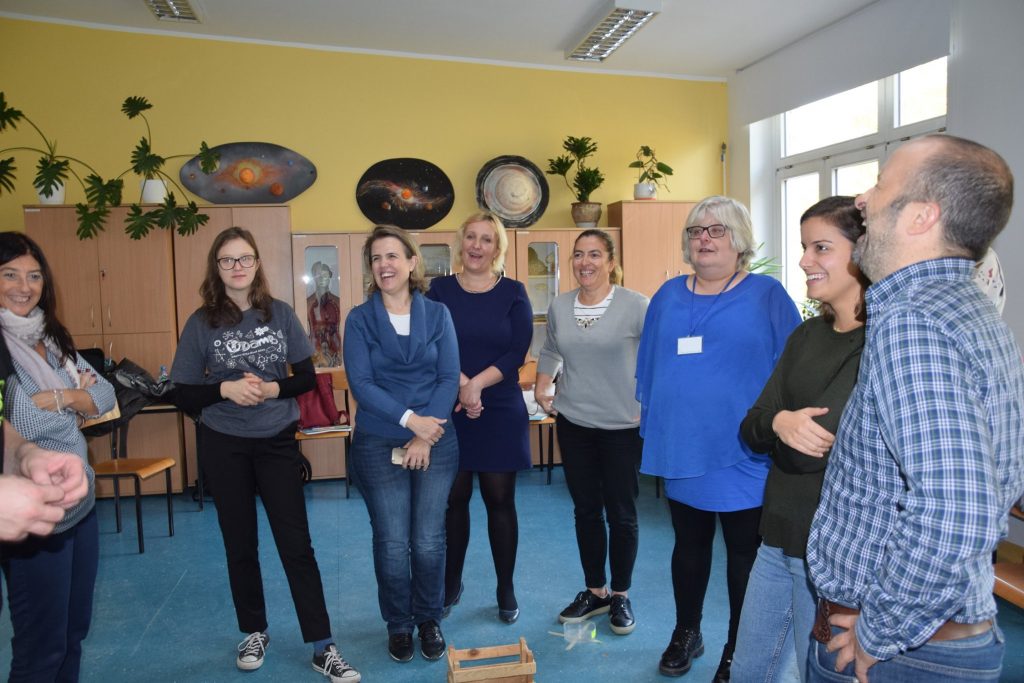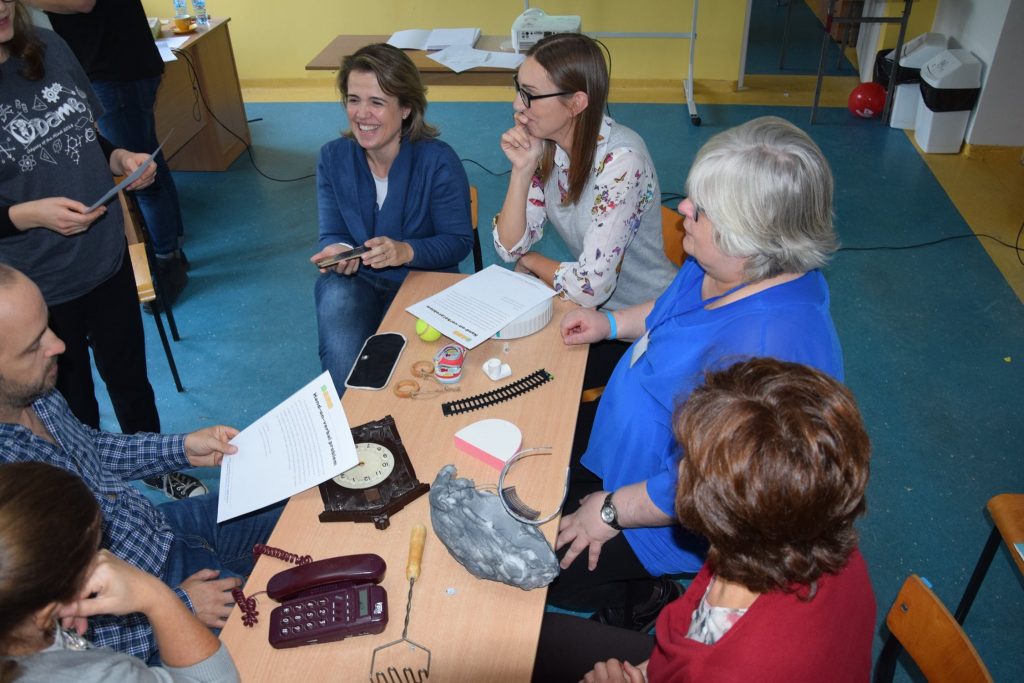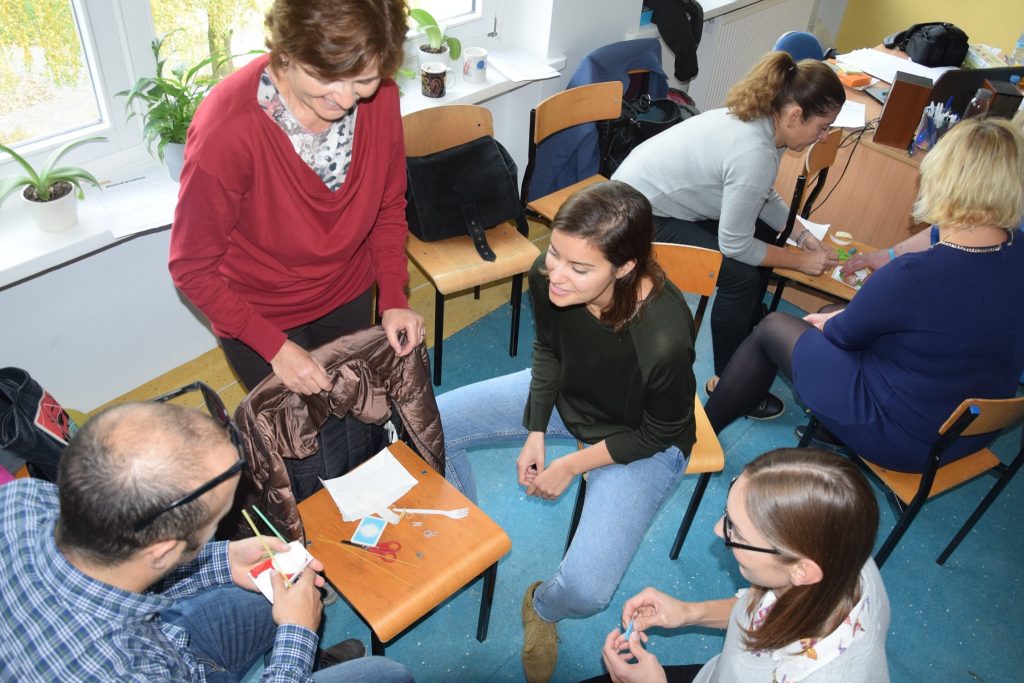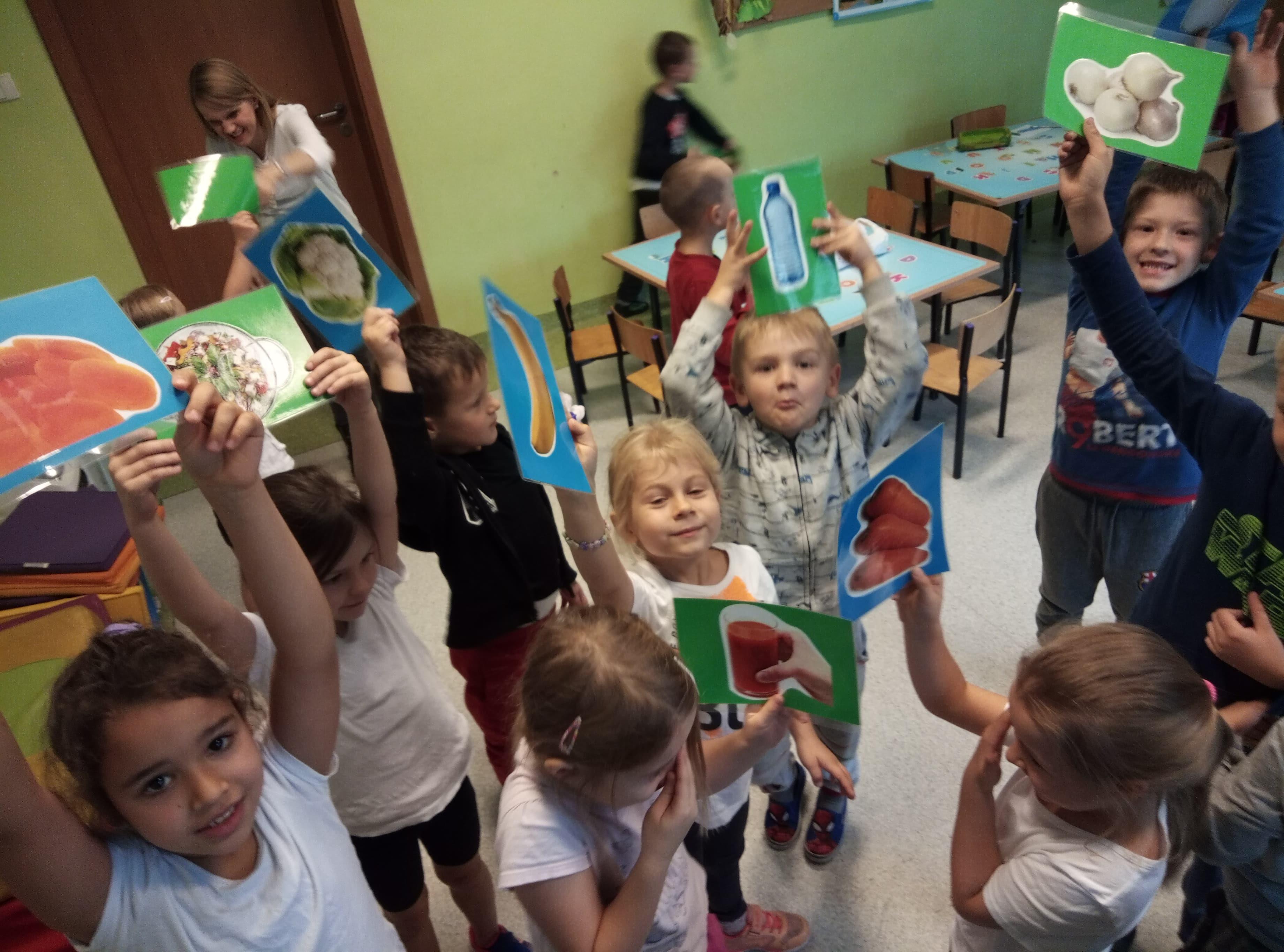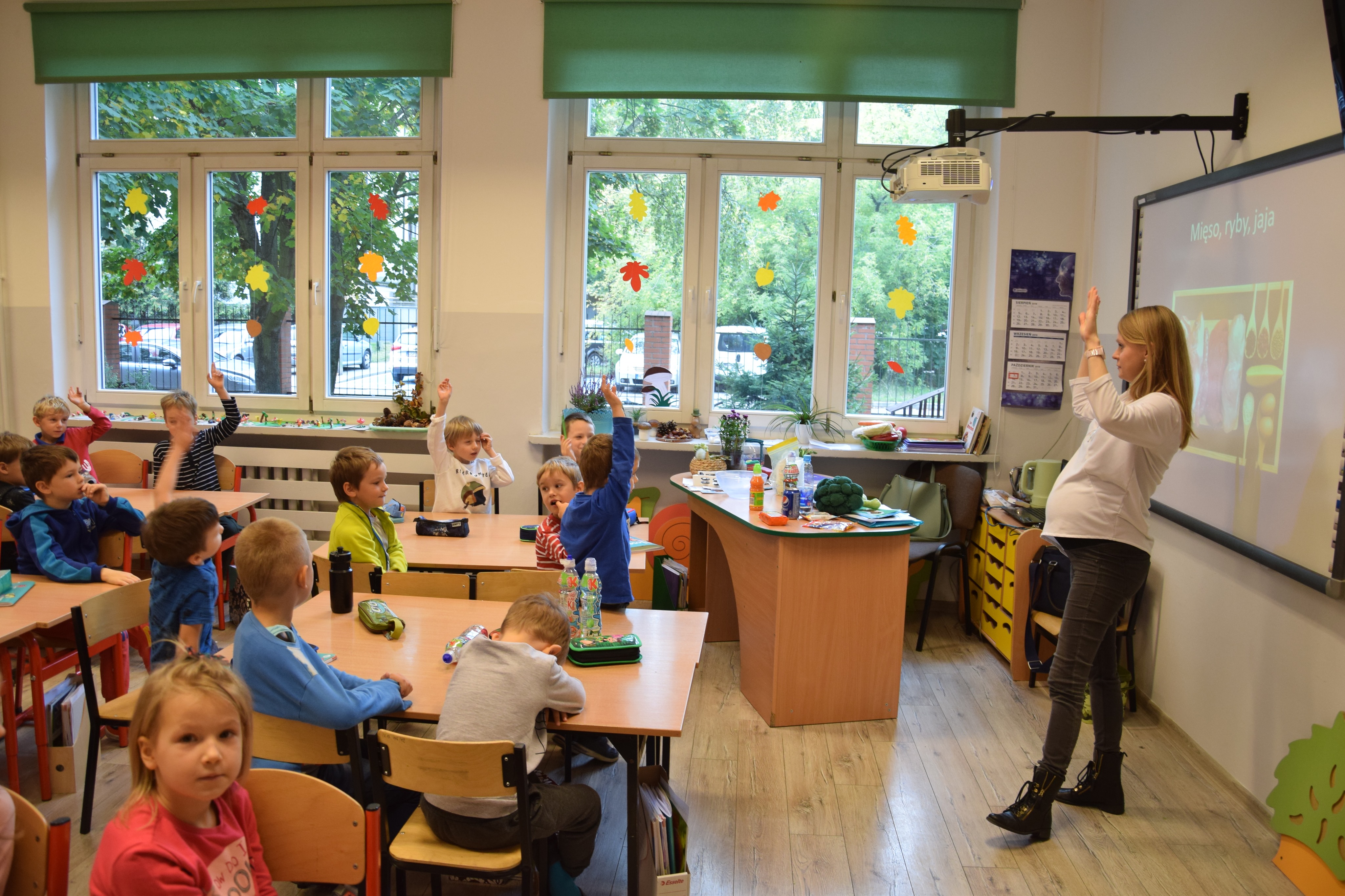On the whole our schools are not user-friendly places. Regardless of the location, across Europe, we tend to perceive them as hostile and oppressive buildings and places. In order to define what their weakest points are and what demends improvement, students took part in a debate. They listed the shortcomings first:
- too crammed classrooms, too much furniture and not enough space to walk and move
- tables and chairs in poor condition, not comfortable enough
- too much teachers’ rubbish!
- decorations are boring and hardly ever updated
- poor lightning
- narration as the main teaching strategy
- not working clocks
- too much copying
- only one message board in the school
- teacher’s-centred lessons prevail over student’s-centred classes
What are the students’ expectations:
- less crowded classes
- more spacious classrooms
- decorations changed frequently, displaying students’ works and projects
- designing one classroom for projects and team work
- special area for silent relax
- more comfortable desks and chairs
- doing things and performing rather than copying and listening
- some additional information boards, classrooms are better labelled
- tablets used on a daily basis
- more games, performances, events which would truly engage the students
- appreciating their initiativeness
During the mobility the students attended the lecture delivered by Adam Parzyński, the headteacher of Primary School no 27 in Gdansk, the school leading in the city in terms of initiativeness and resourcefulness. He presented us some of the ideas of using the space wisely and effectively, relying on students’ skills and their creativity. Afterwards students made their own projects of ideal classrooms and they recorded the podcast on making a school more favourable place. They researched for the information in the following areas:
- How to organize space well
- How to make school effective for learning
- How to improve school as a less stressful place
- How to involve children and parents more
